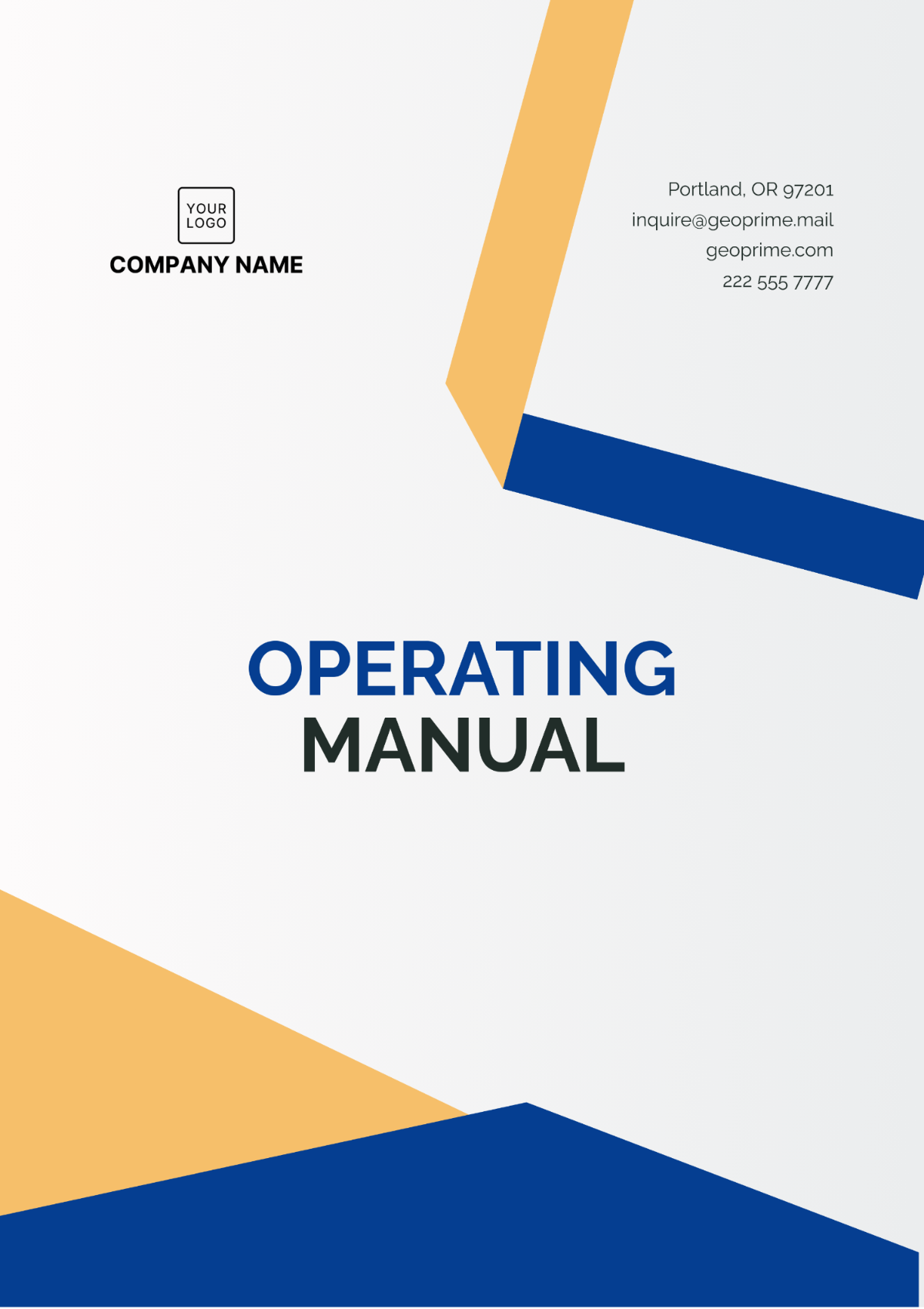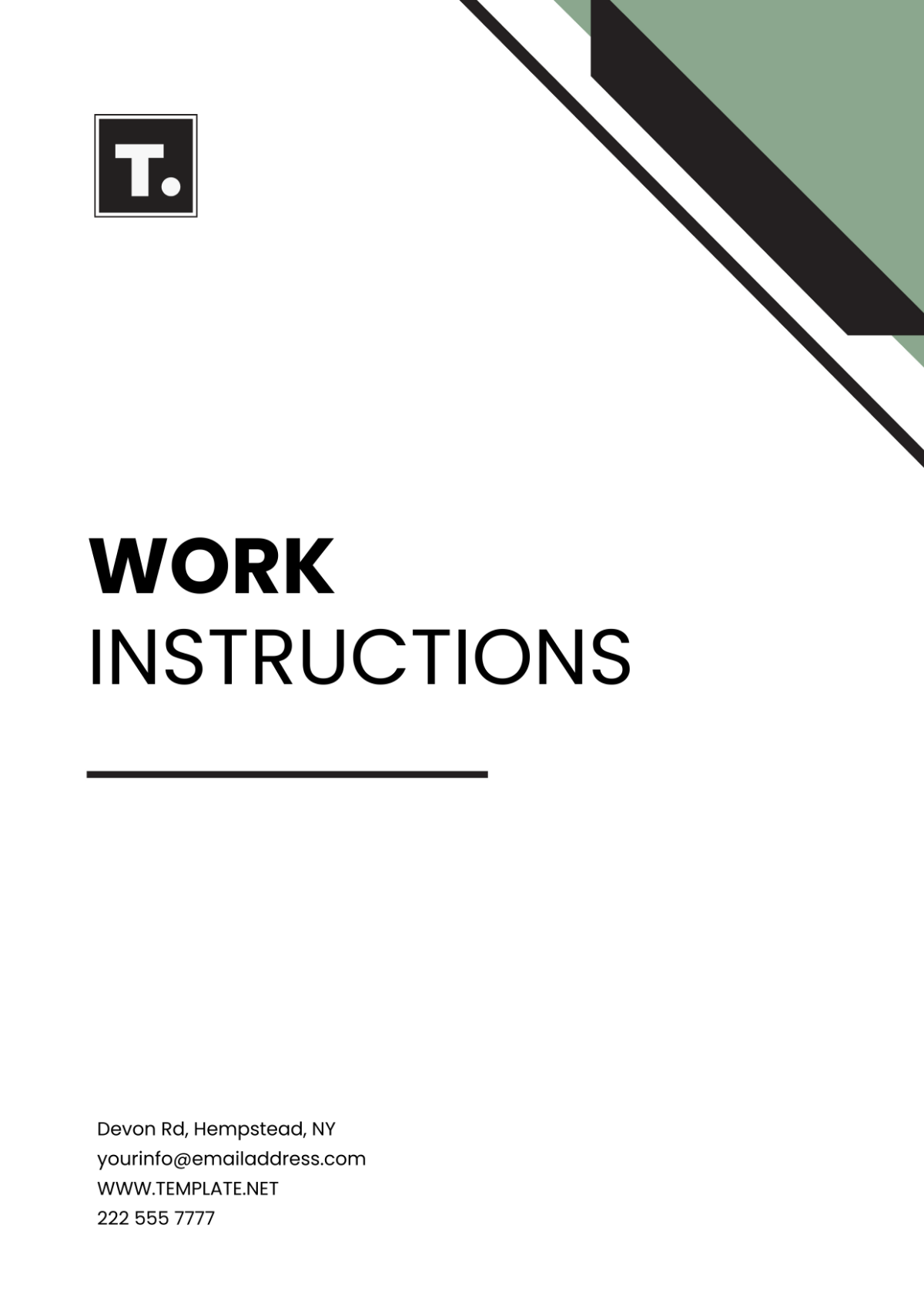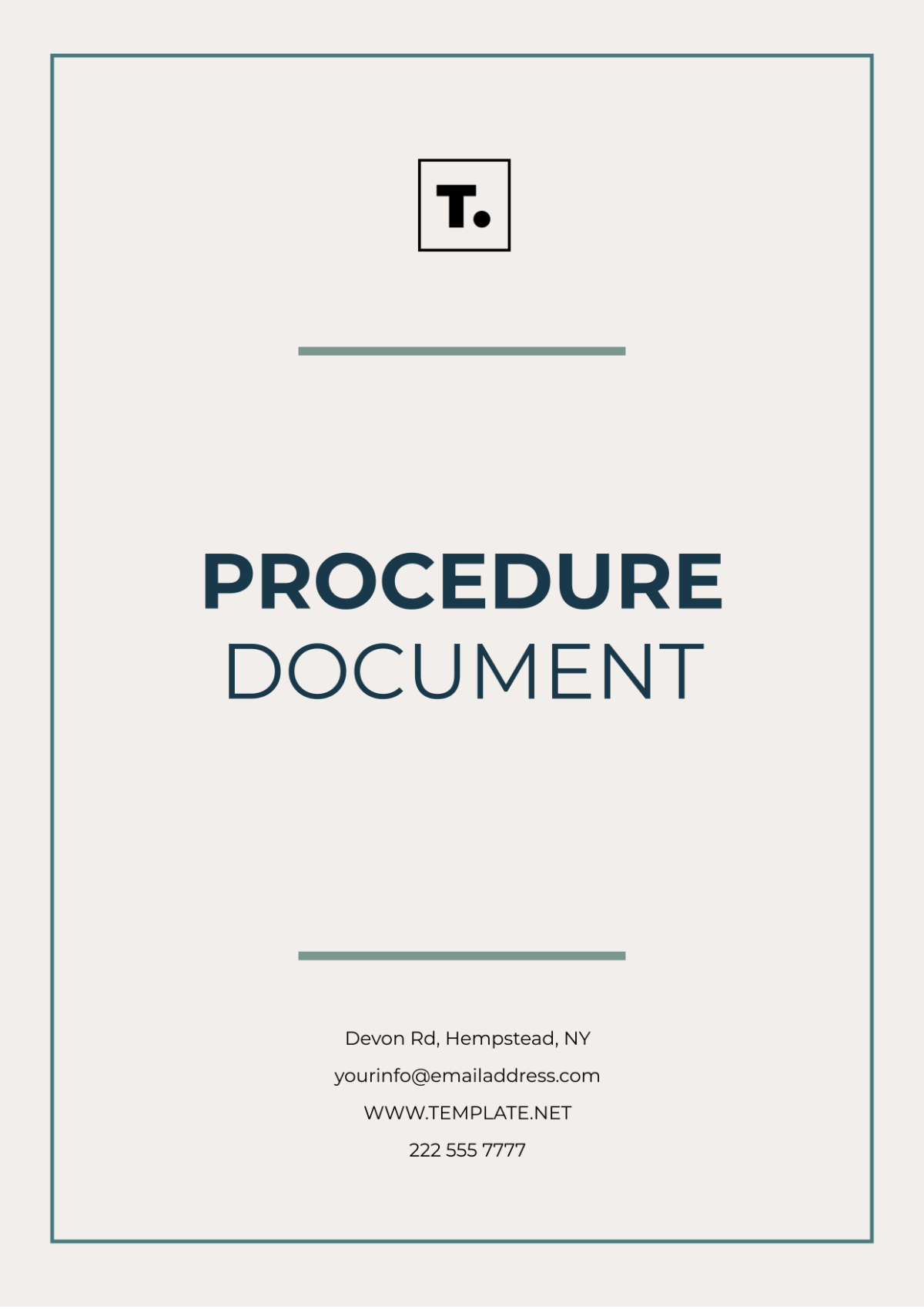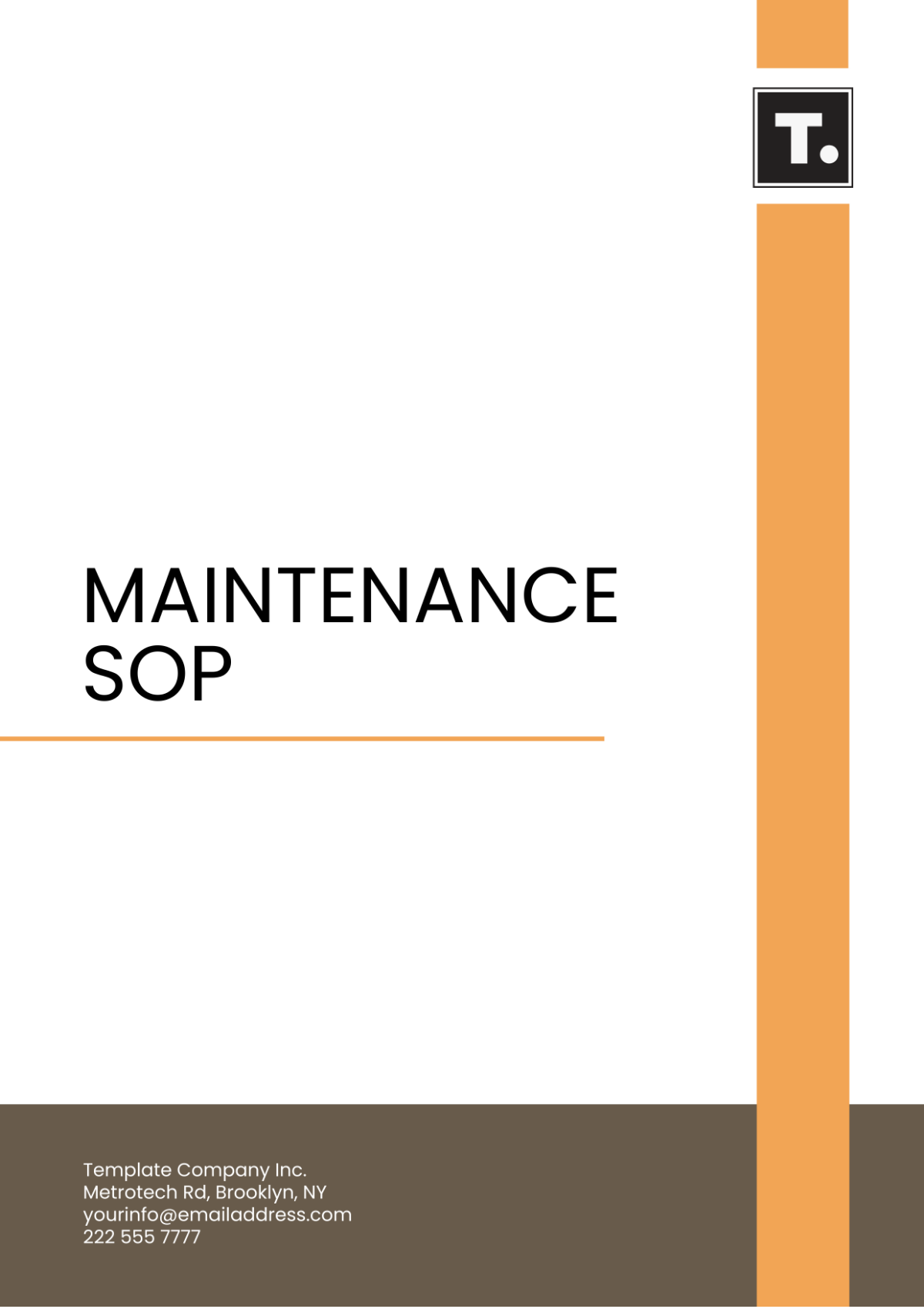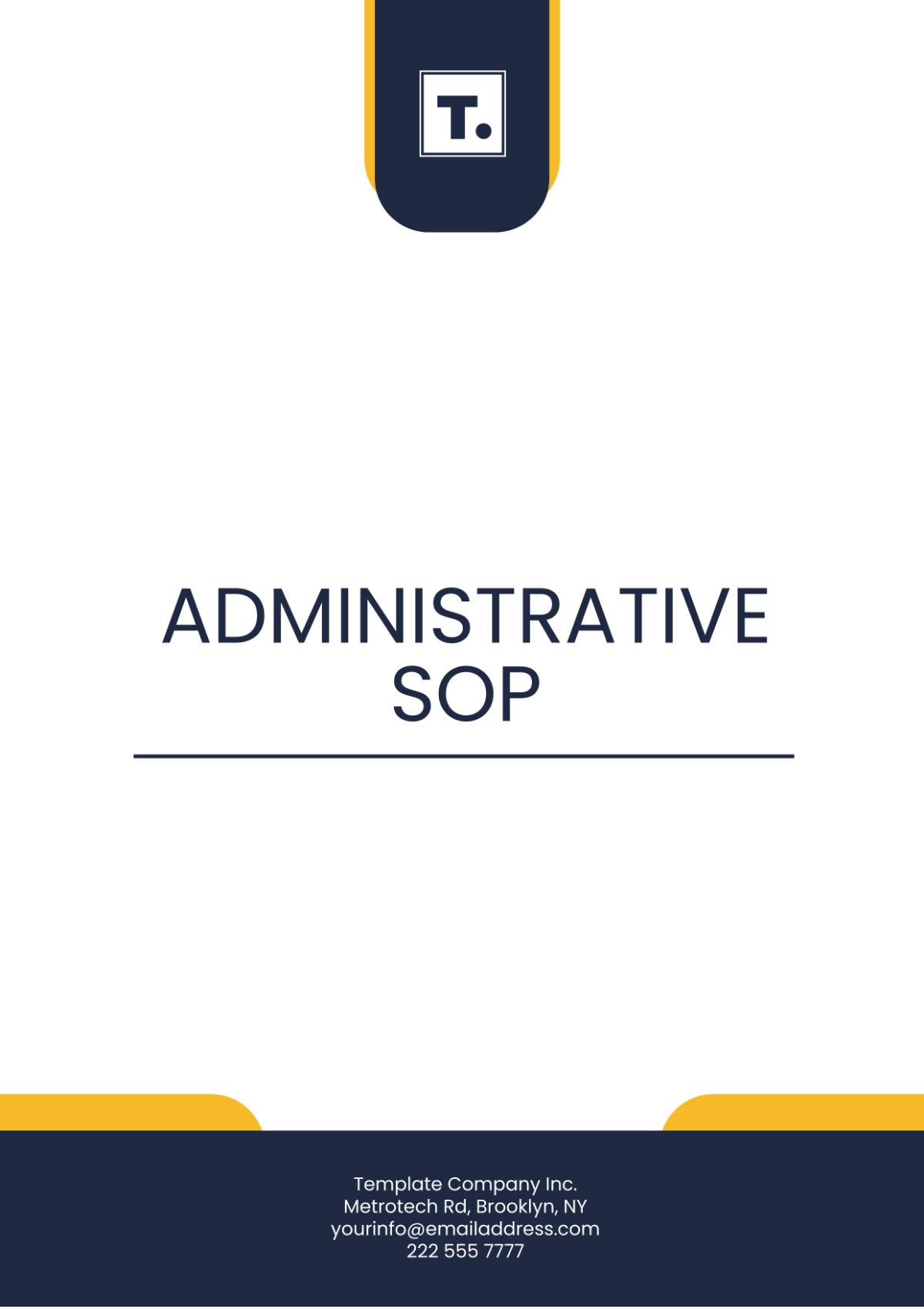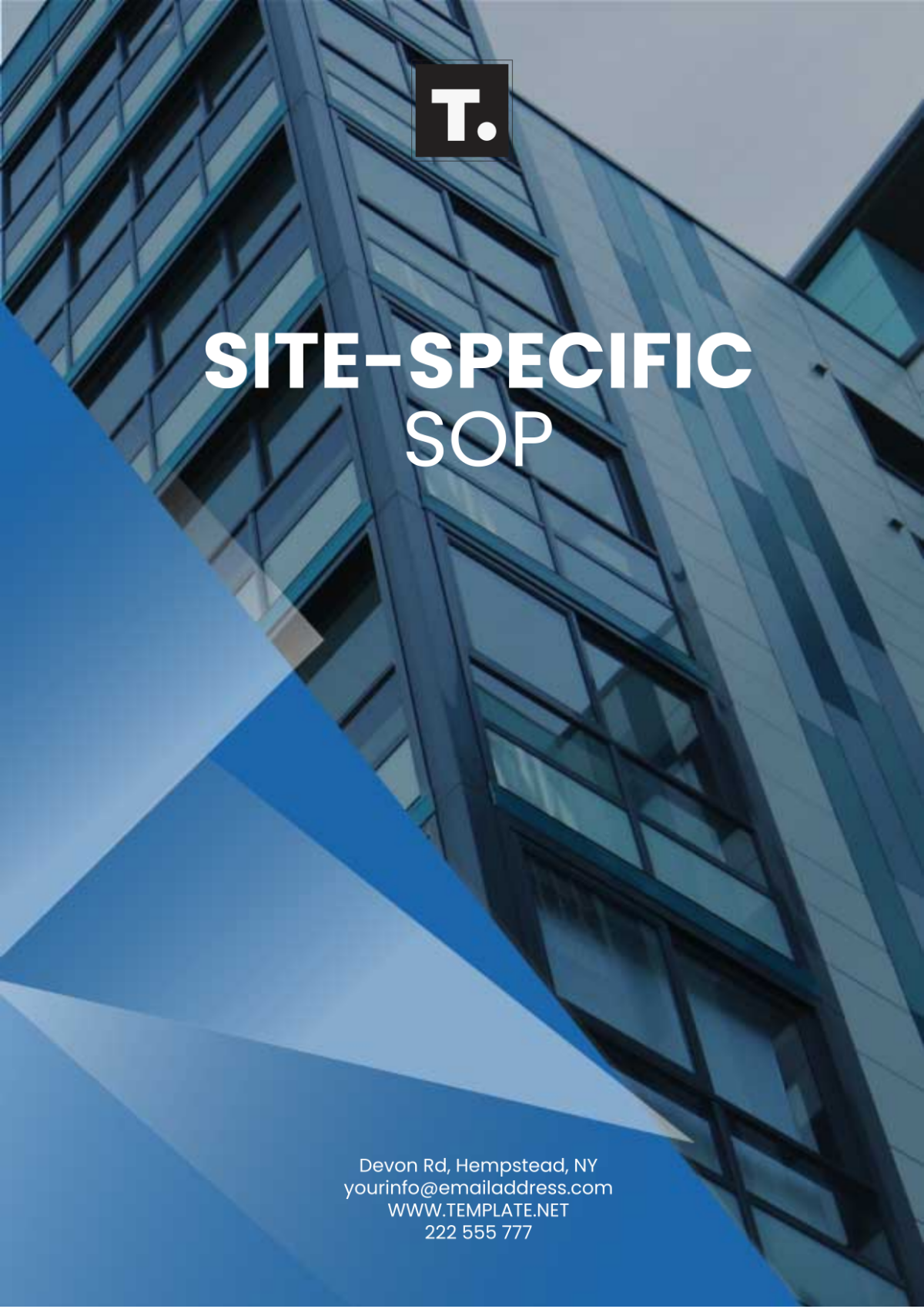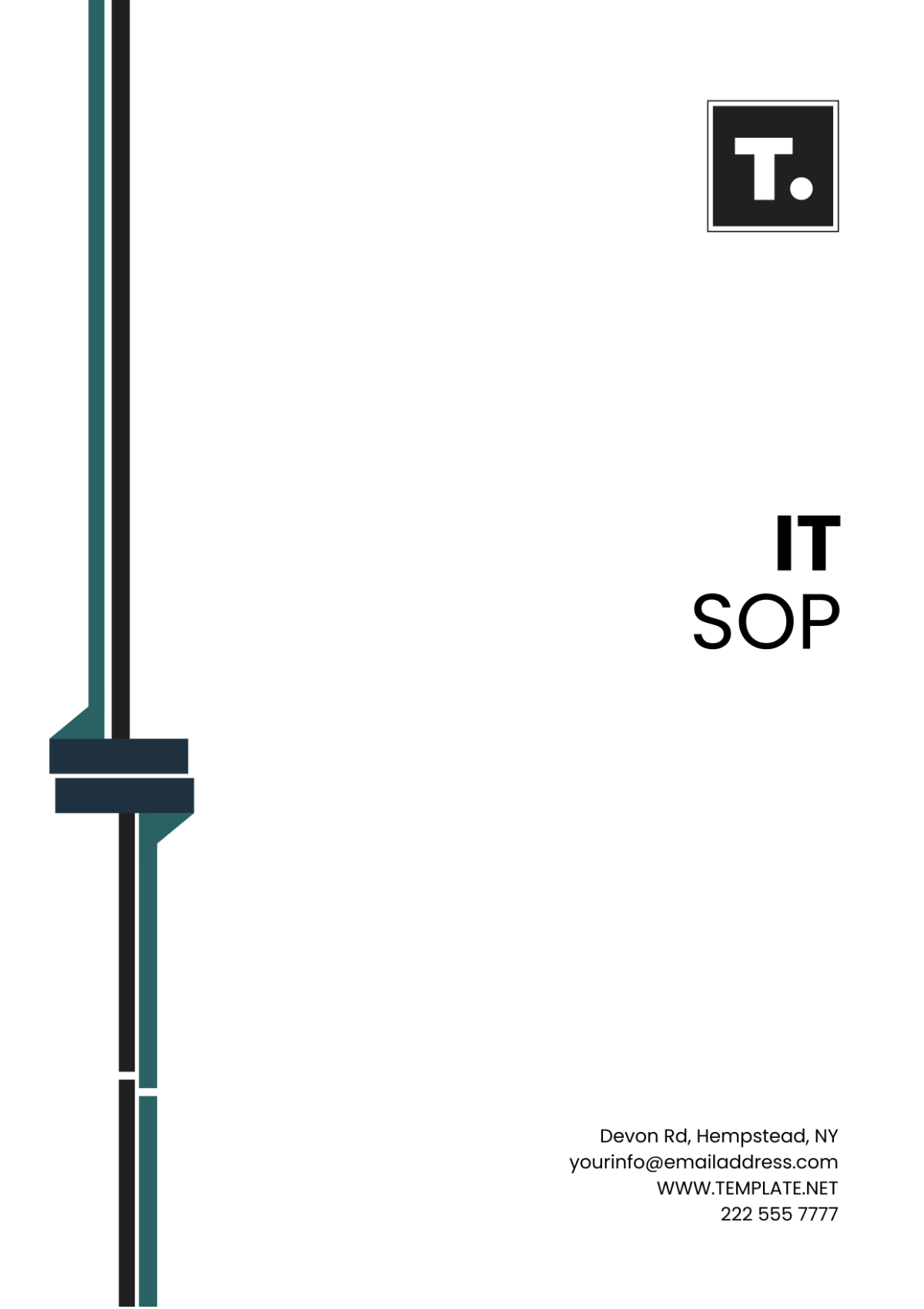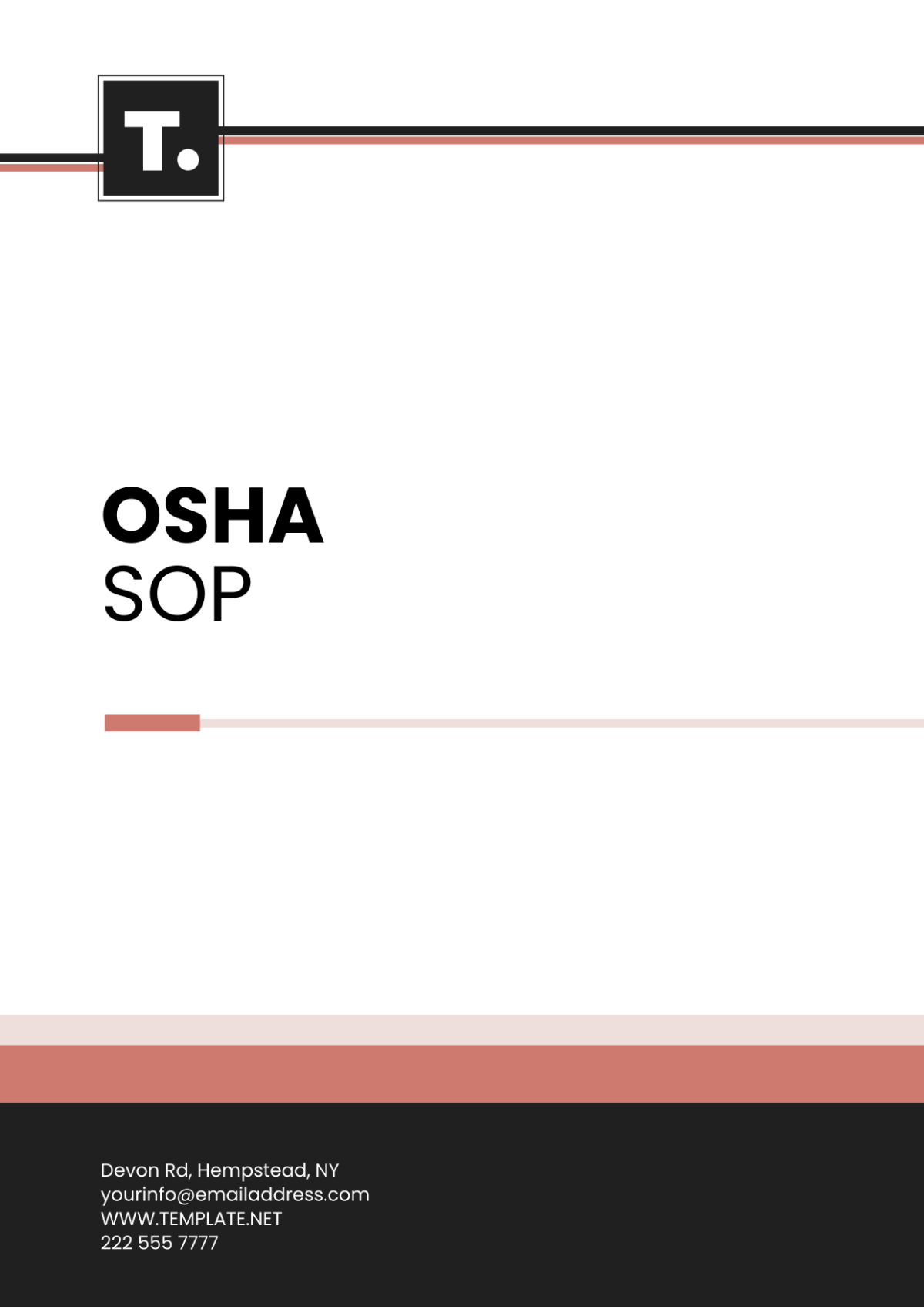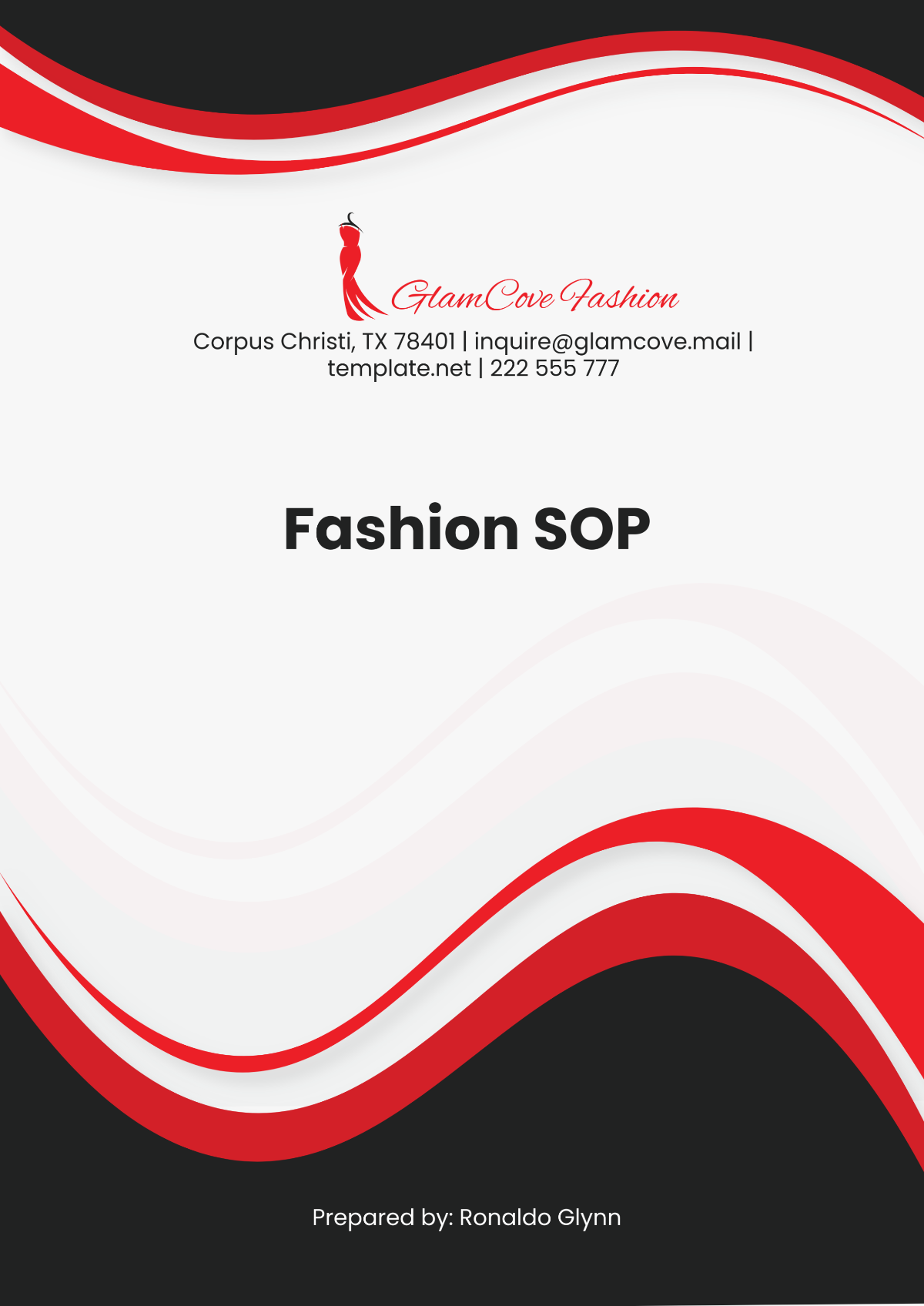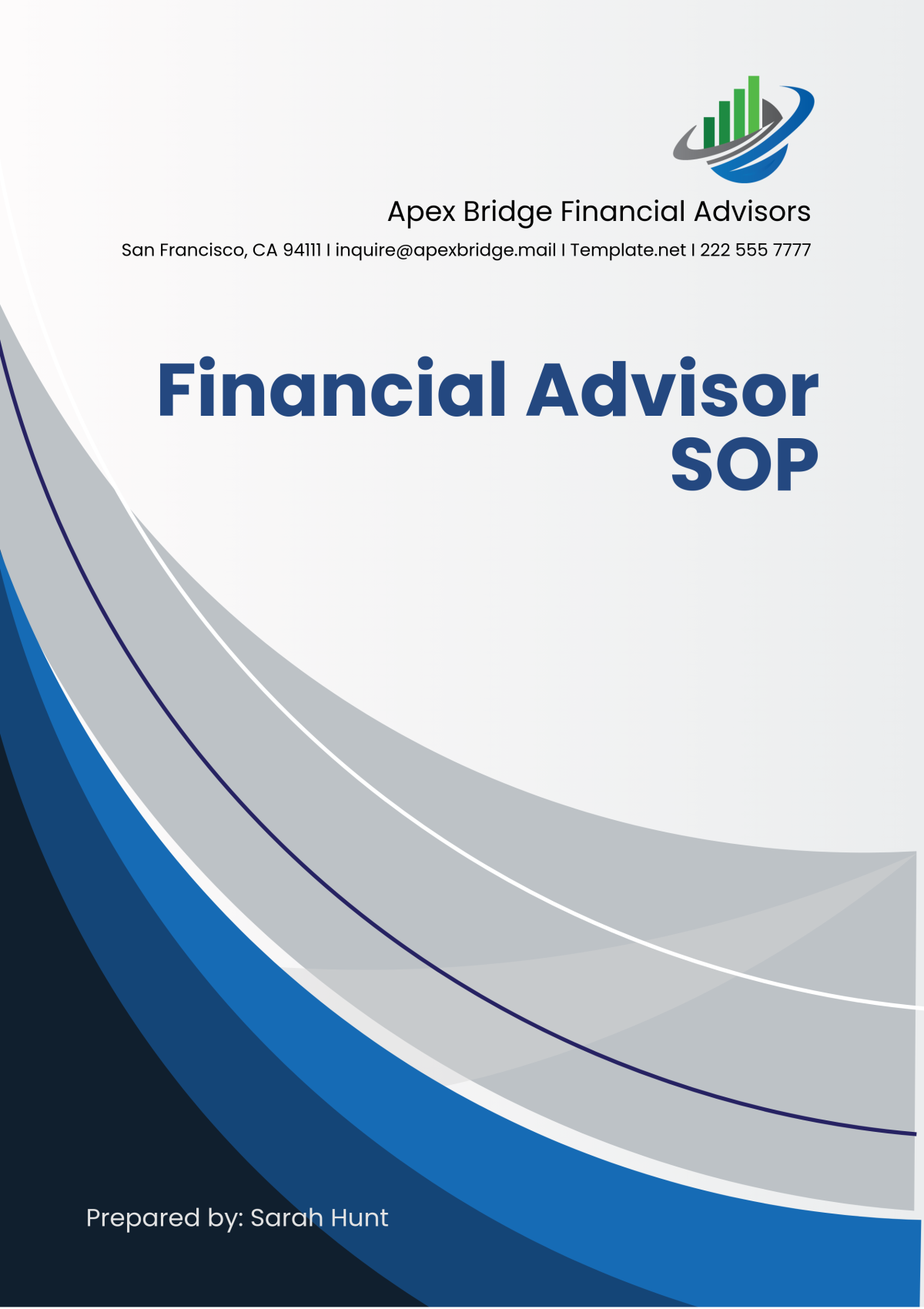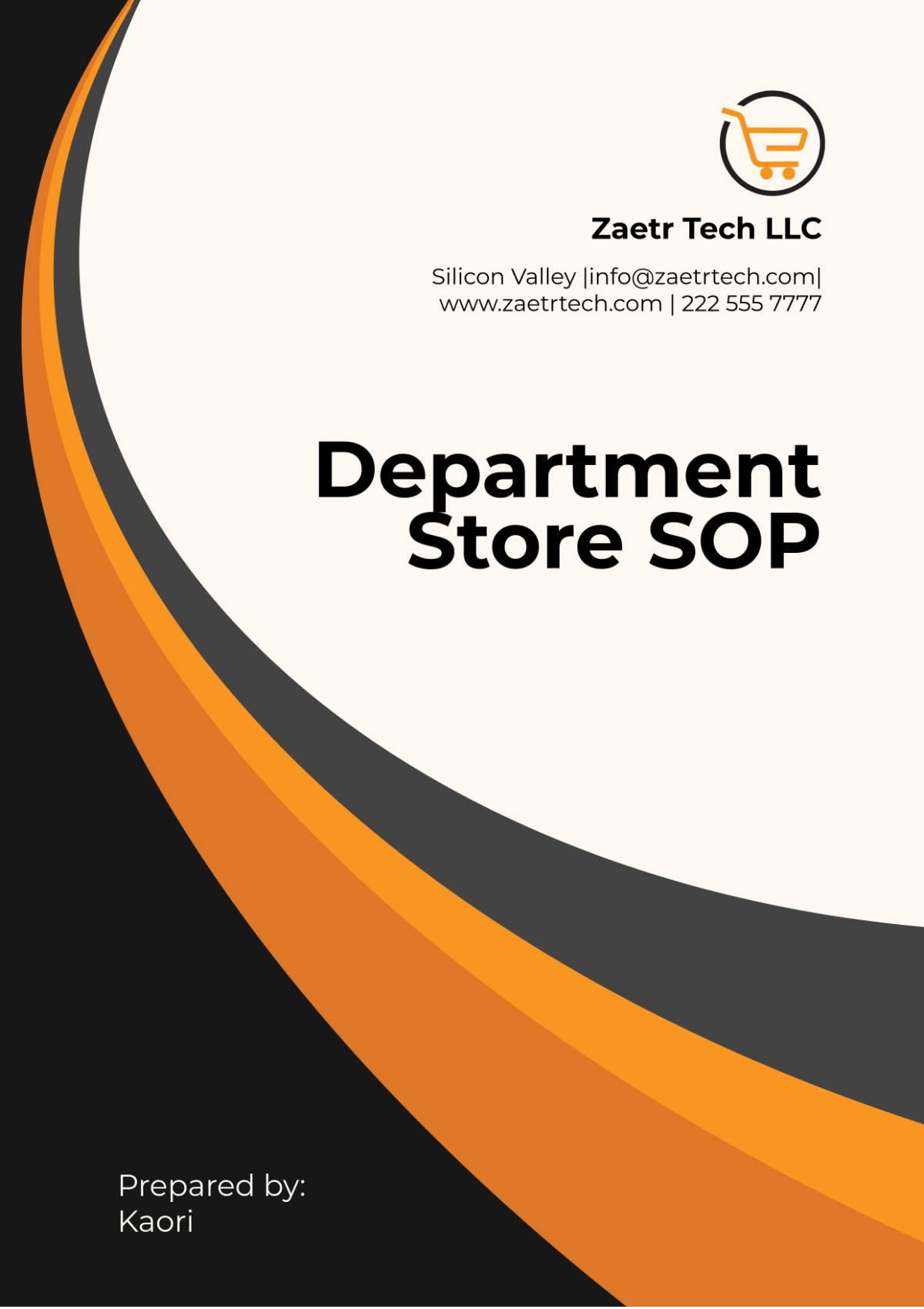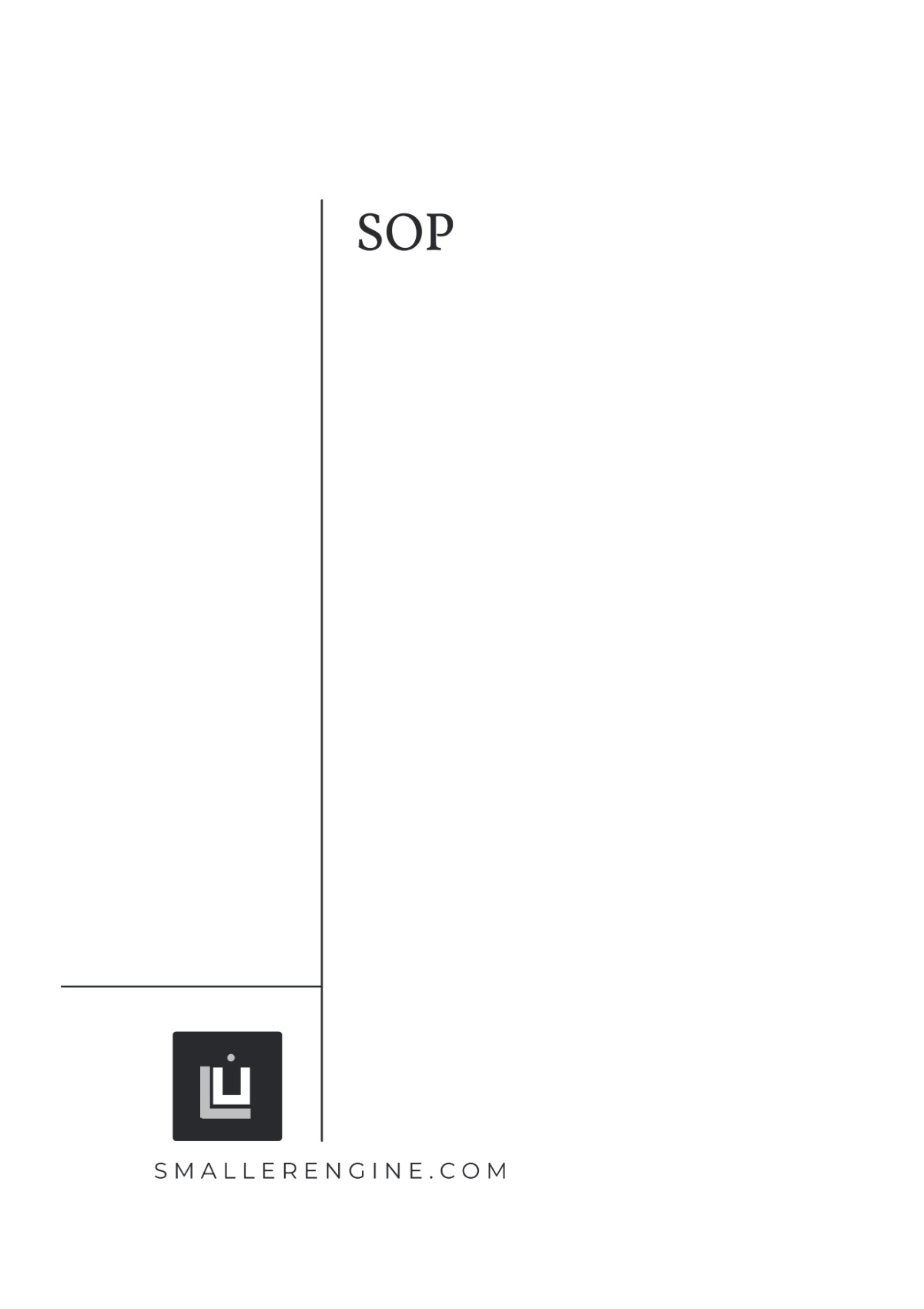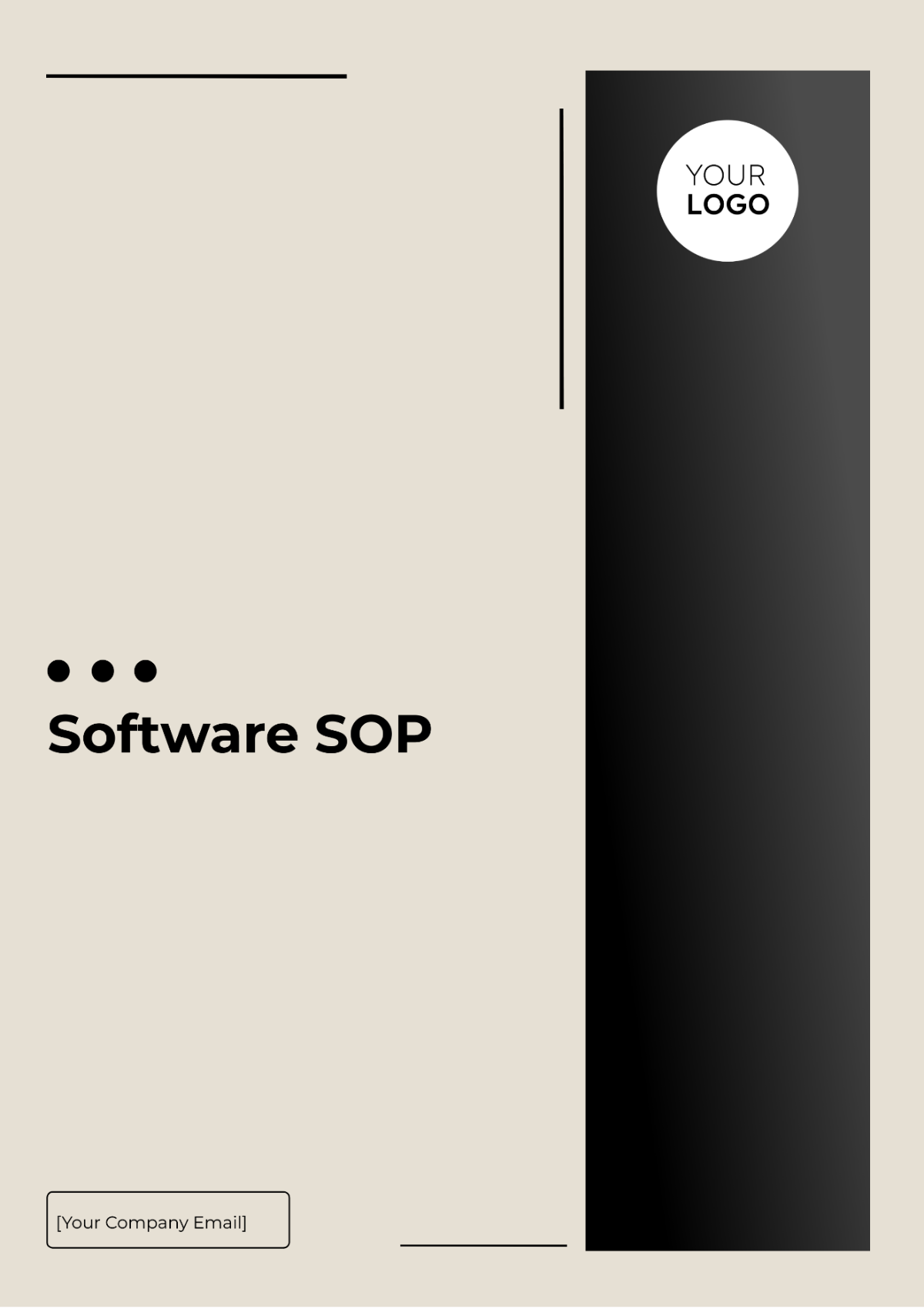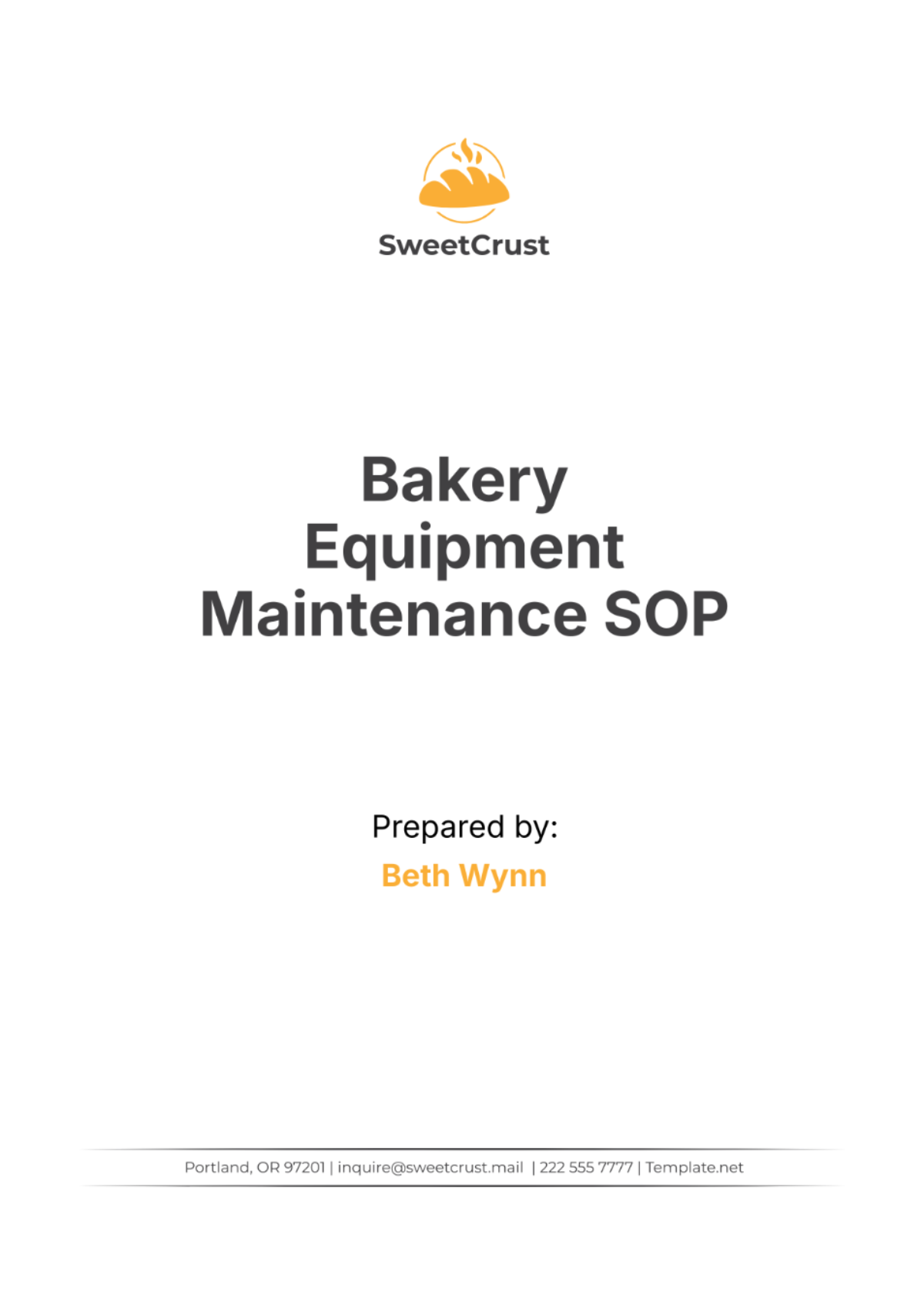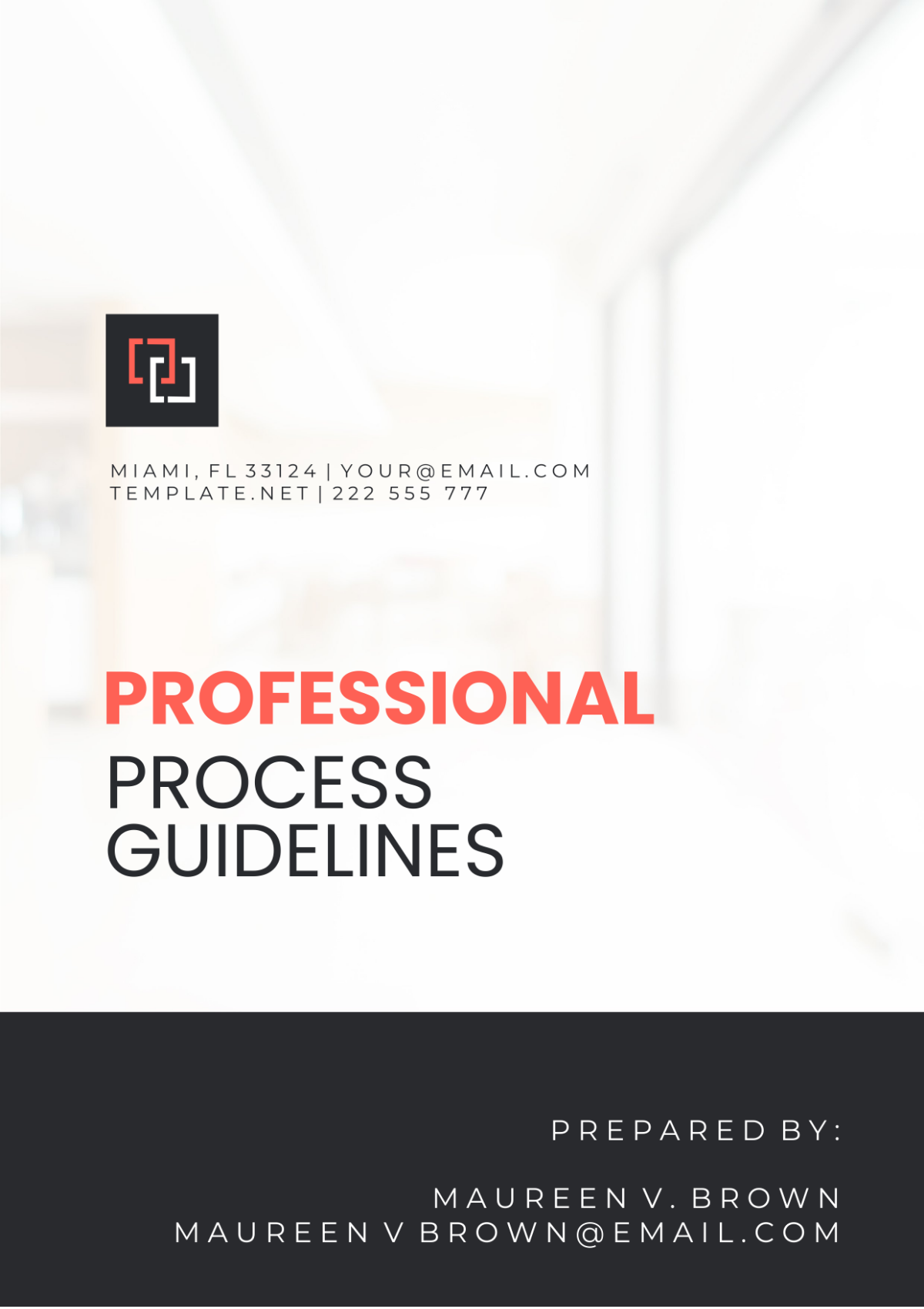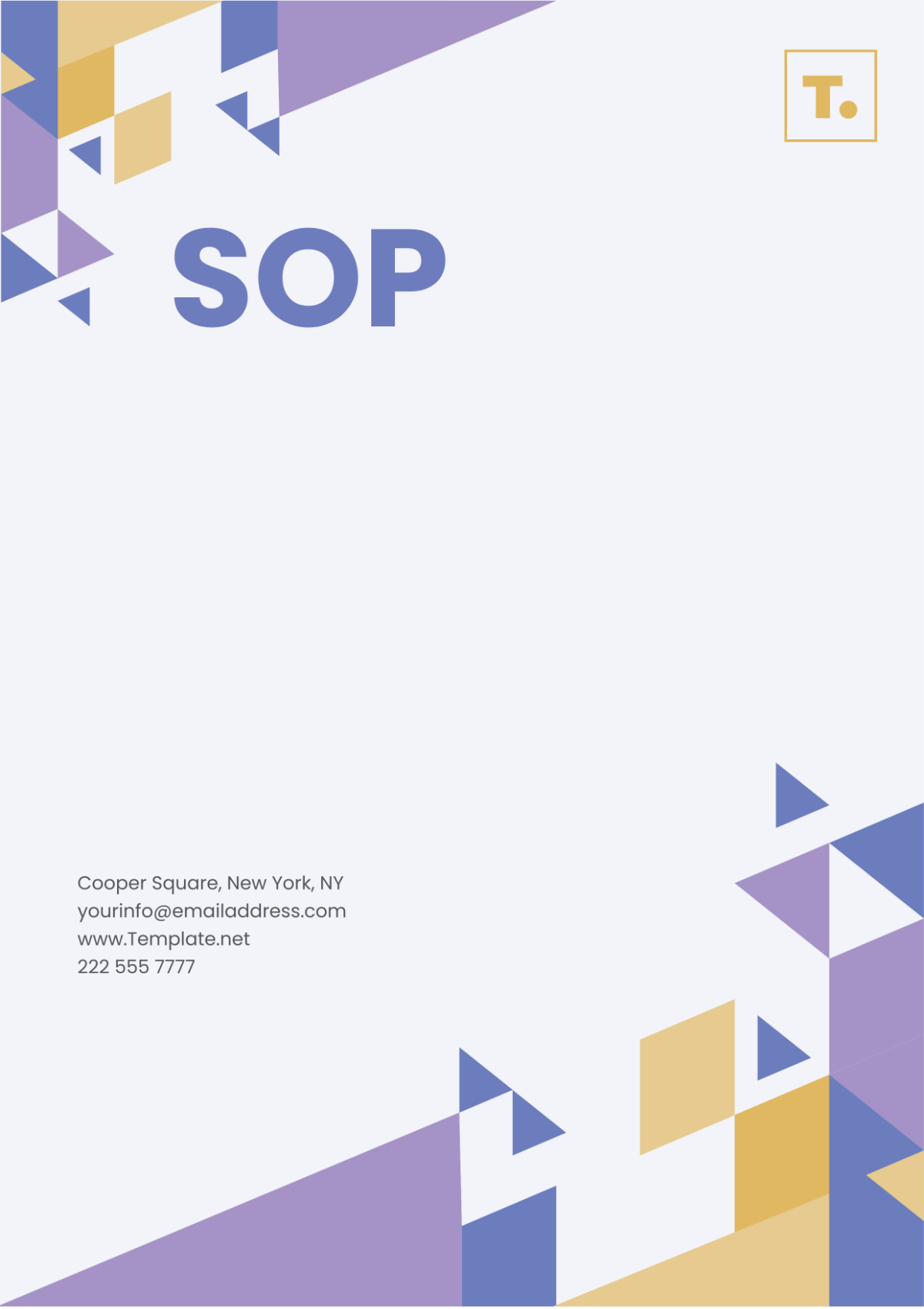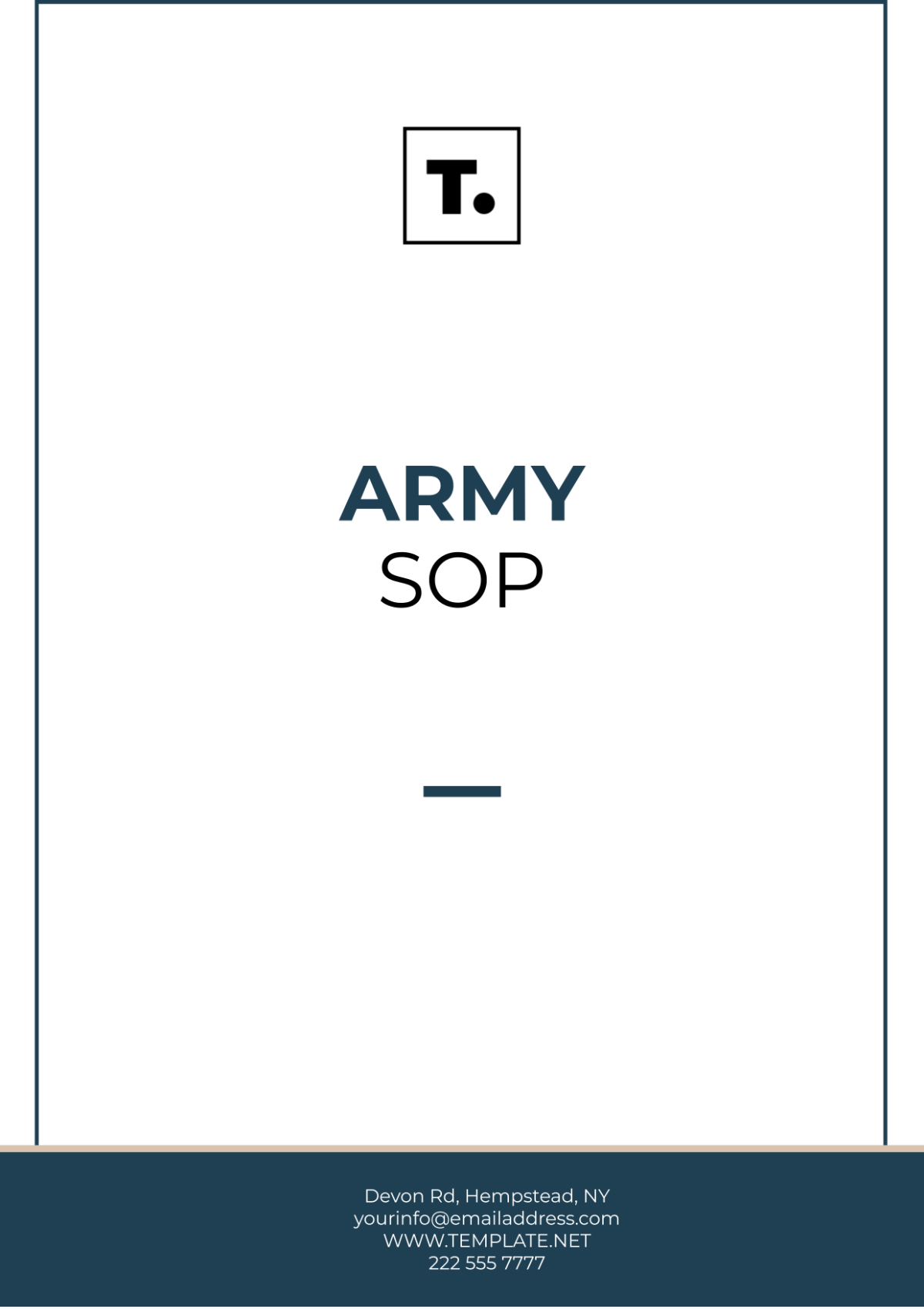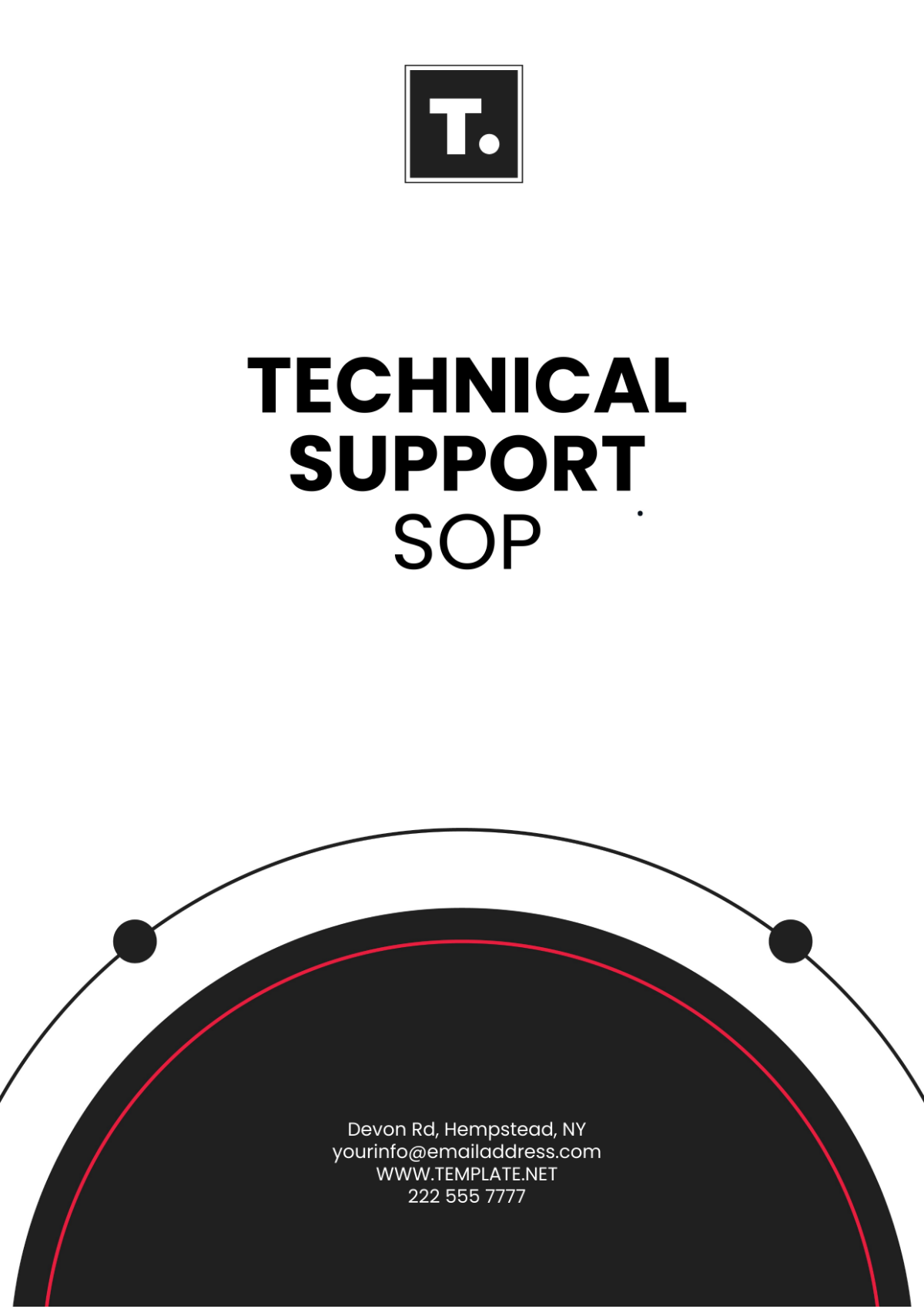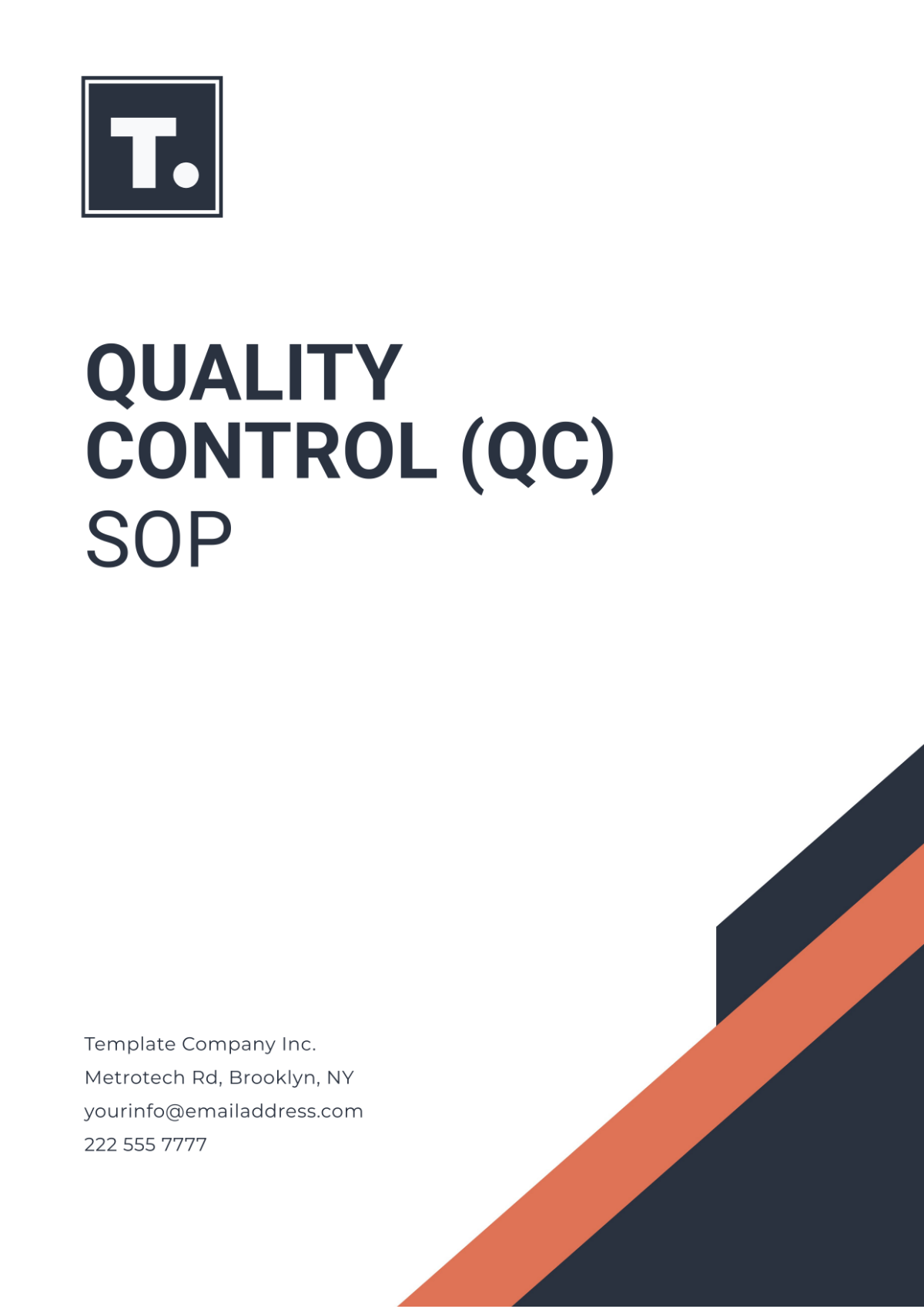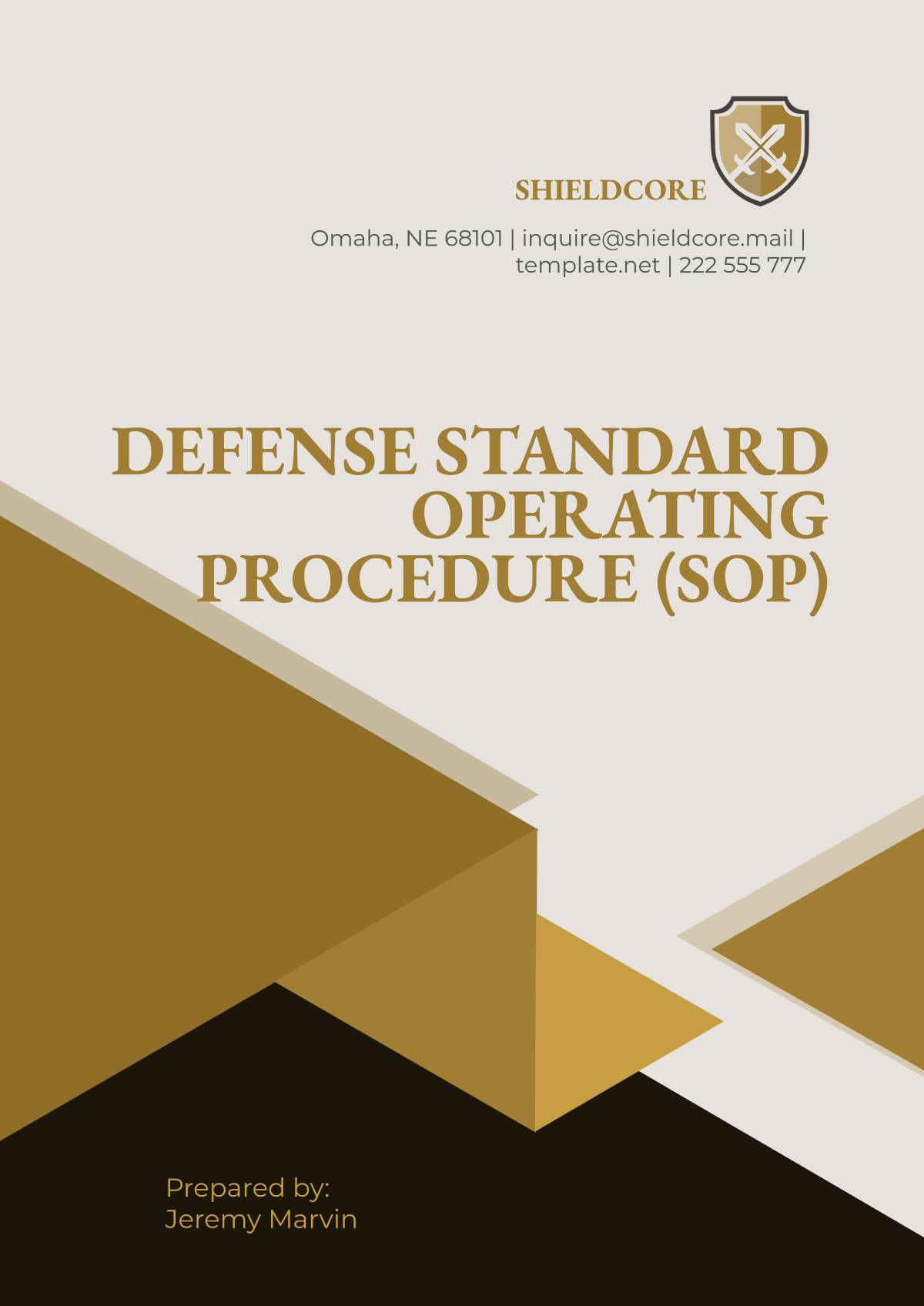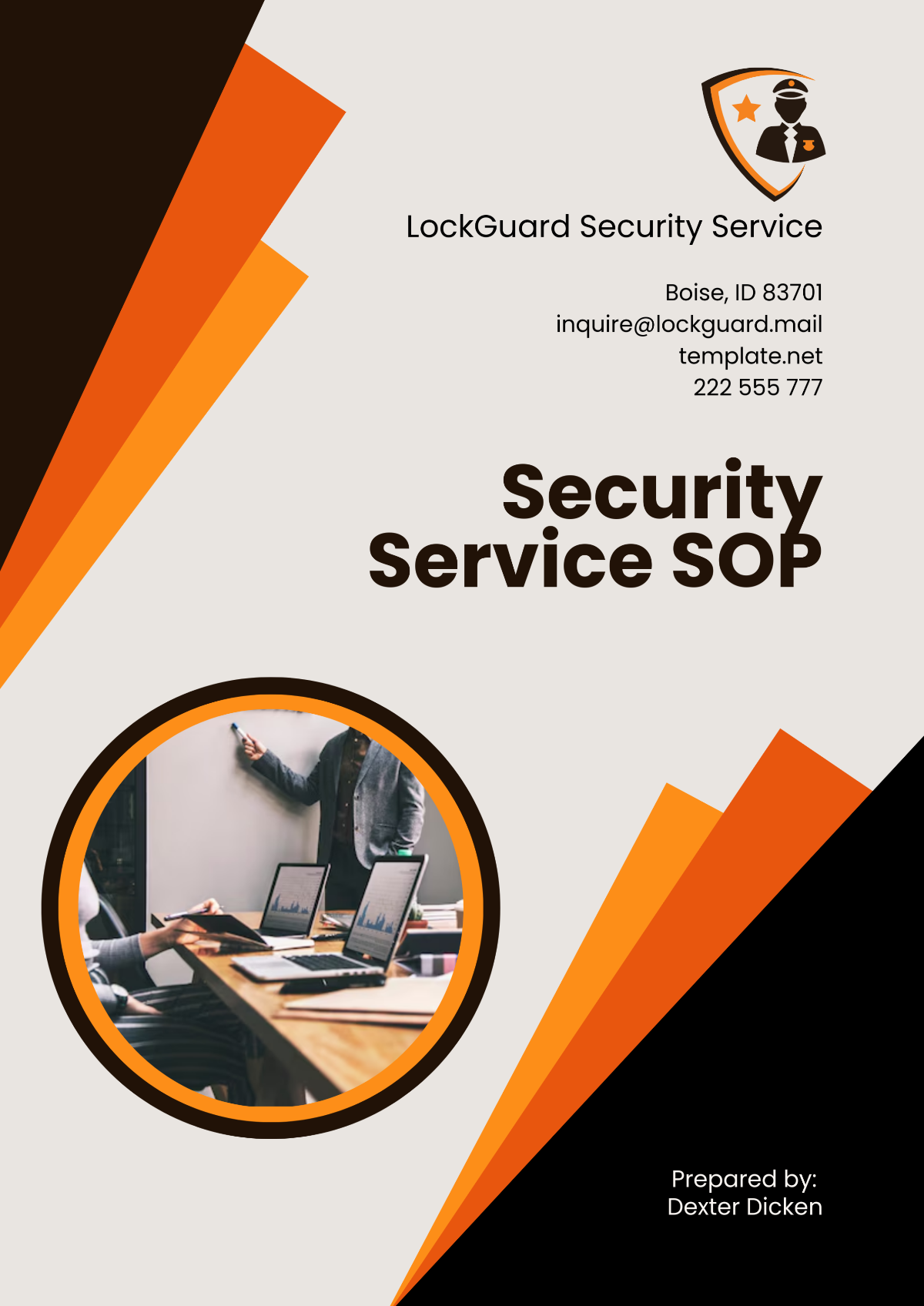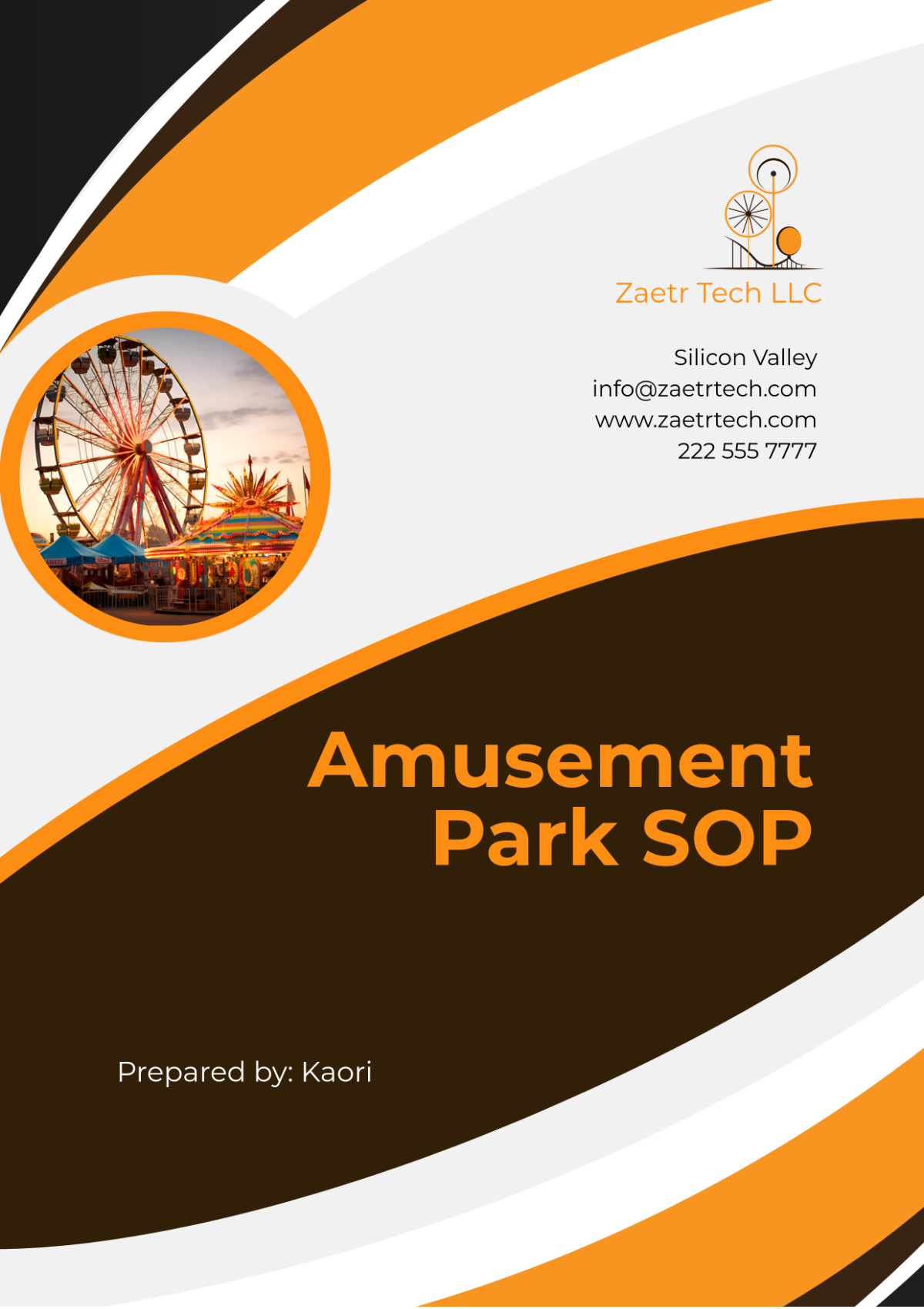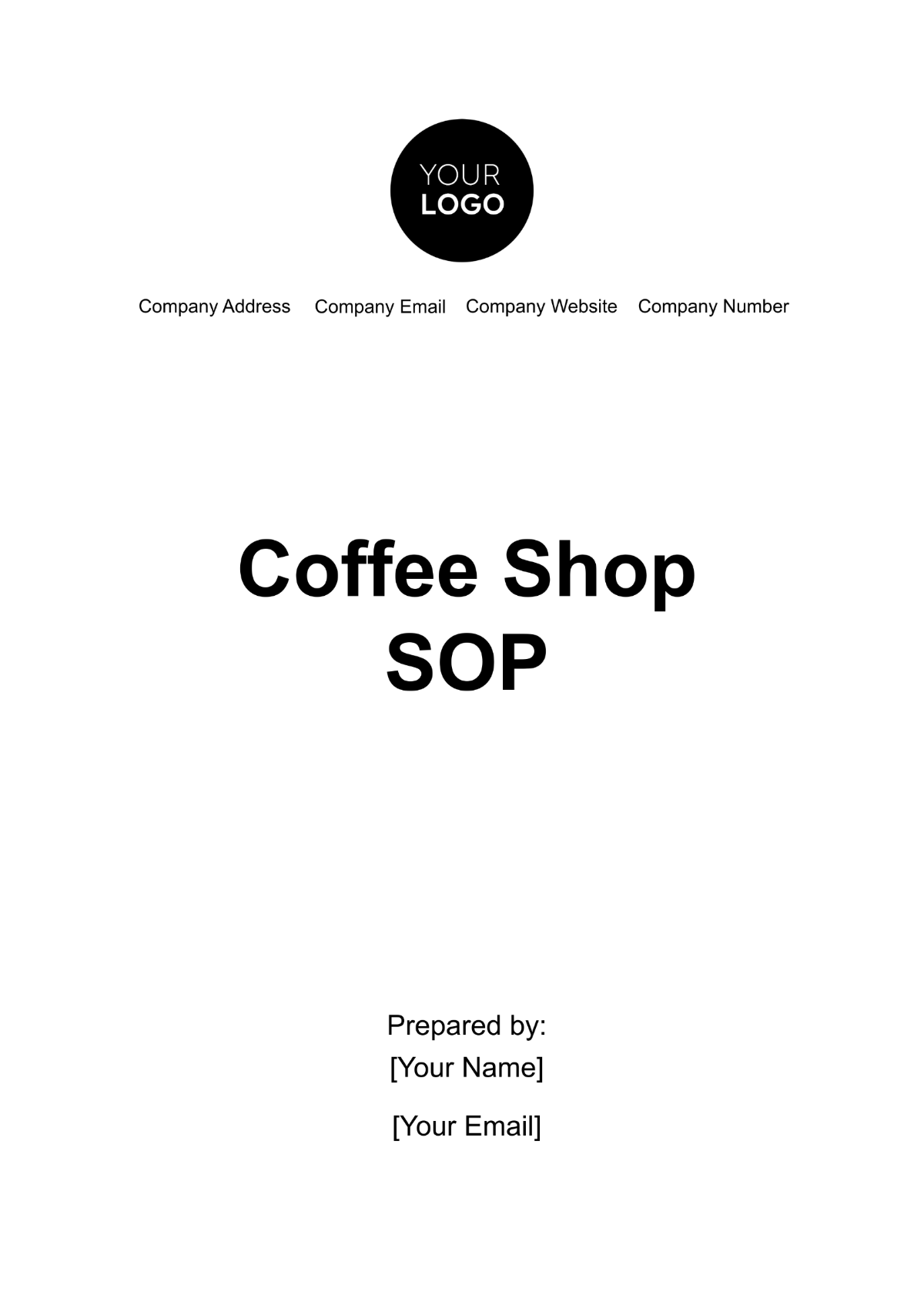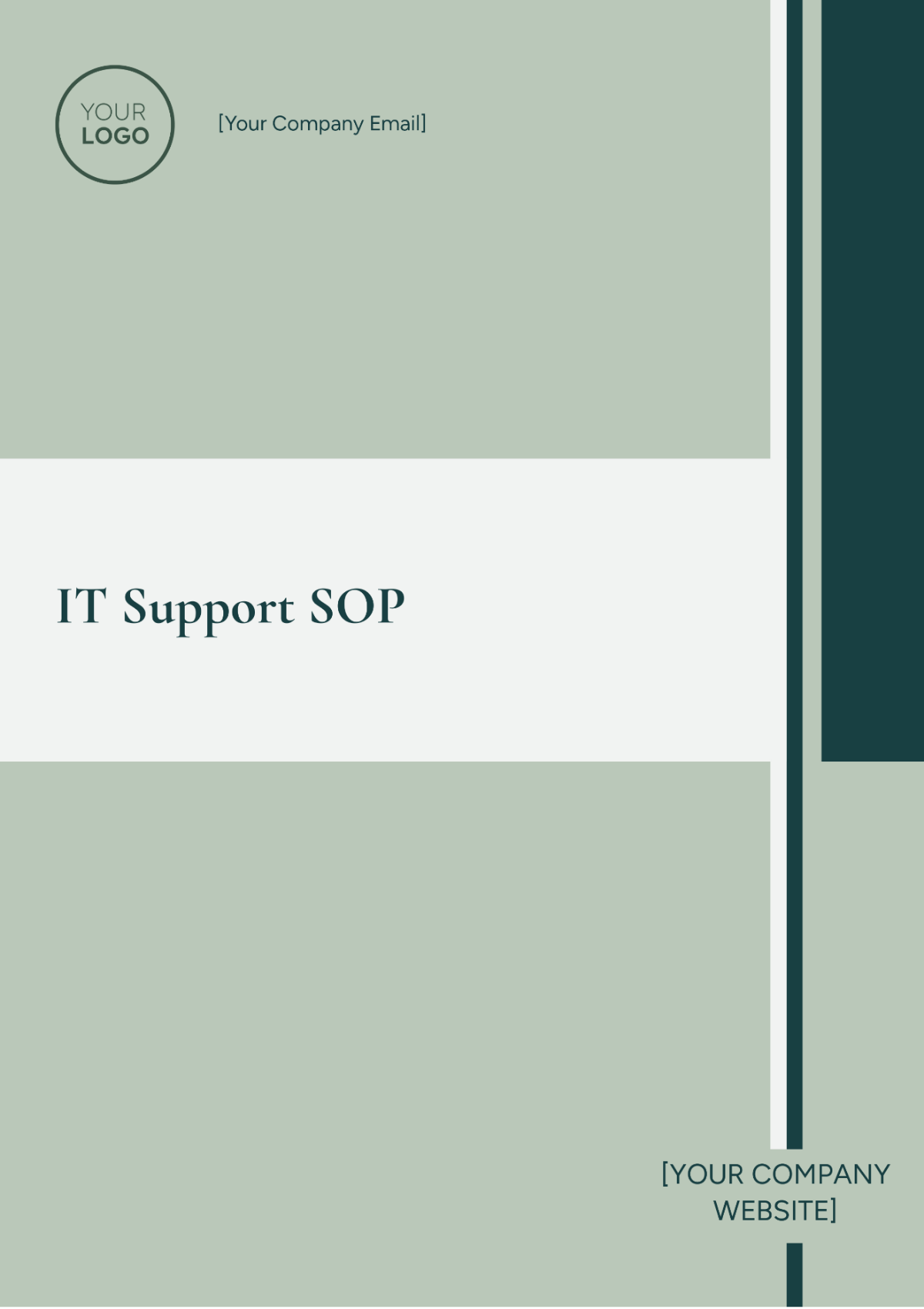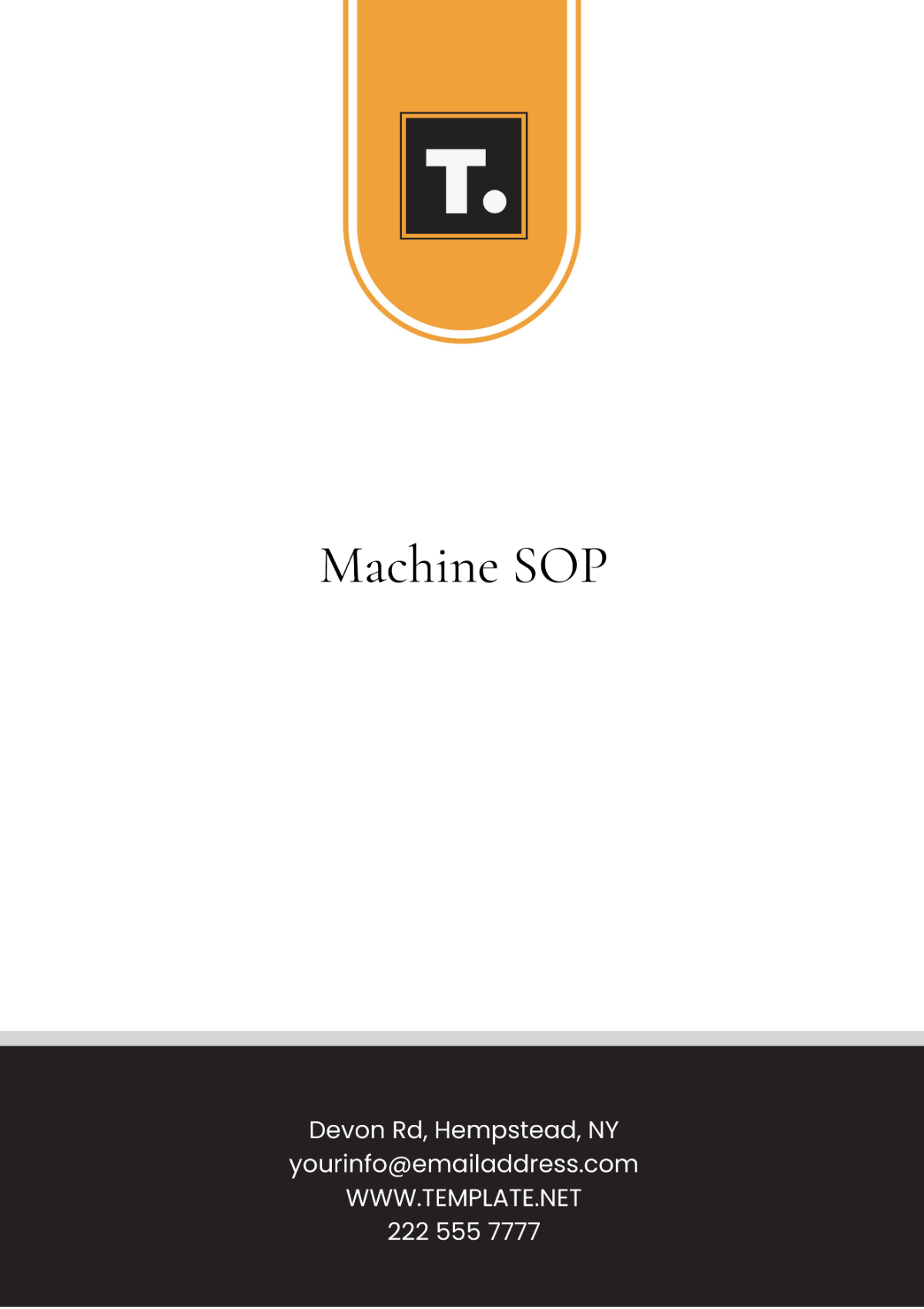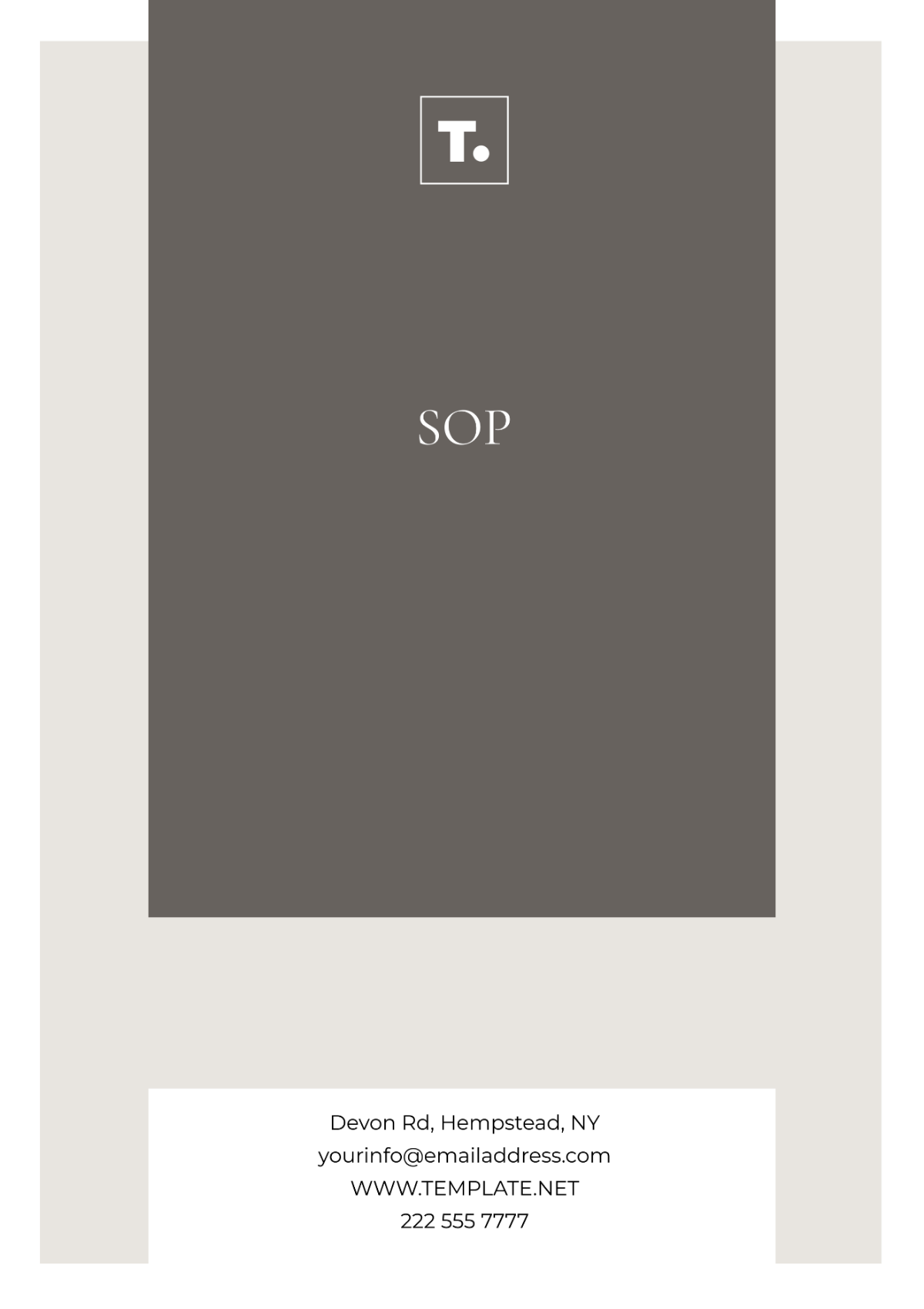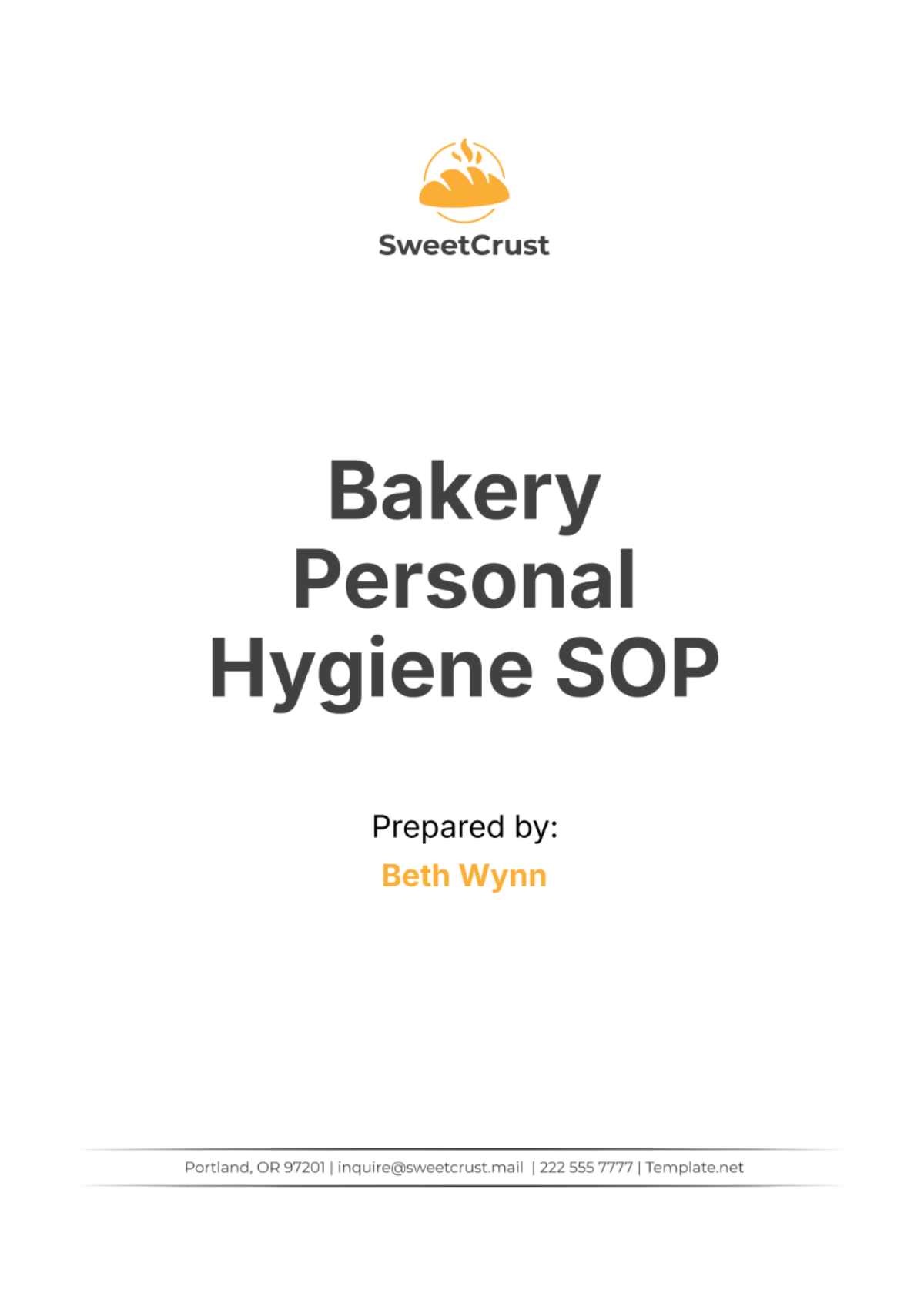Free Architecture Business SOP Template
Architecture Business SOP
I. Introduction
A. Purpose of the SOP
The purpose of this Standard Operating Procedure (SOP) is to establish guidelines and procedures for the efficient and effective operation of [Your Company Name]. These SOPs aim to ensure consistency, quality, and compliance with industry standards and regulations in all aspects of our business operations.
B. Scope and Applicability
This SOP applies to all employees, contractors, and stakeholders involved in the architectural design and project management processes at [Your Company Name]. It covers project initiation, design processes, quality control, project management, administrative tasks, client communication, compliance, training, and continuous improvement.
C. Definitions of Key Terms
Architectural Design: The process of conceptualizing, planning, and creating architectural solutions for buildings and structures.
Project Initiation: The phase of a project where initial discussions with the client occur, project objectives are defined, and the project team is assembled.
Schematic Design: The phase of design where initial sketches and concepts are developed to represent the overall design intent.
Quality Control: The process of ensuring that design outputs meet specified requirements and adhere to quality standards.
Change Management: The process of managing changes to project scope, schedule, and budget throughout the project lifecycle.
II. Project Initiation
A. Client Intake Process
Client Inquiry: All client inquiries are directed to the designated point of contact within the firm.
Initial Assessment: The designated point of contact evaluates the feasibility of the project and schedules an initial client meeting.
Client Meeting Setup: The administrative staff coordinates the scheduling of the initial client meeting and notifies relevant team members.
B. Initial Client Meeting Procedures
Introduction: The project manager or principal architect introduces the firm, its services, and previous relevant projects.
Project Discussion: The client discusses their project requirements, objectives, and expectations.
Preliminary Site Visit: If necessary, a preliminary site visit is scheduled to assess the project site and gather additional information.
C. Requirements Gathering
Client Needs Analysis: The project team conducts a thorough analysis of the client's needs, preferences, and constraints.
Site Analysis: The team conducts a site analysis to understand site conditions, constraints, and opportunities.
Regulatory Review: The team researches and reviews applicable building codes, zoning regulations, and other regulatory requirements.
D. Establishing Project Objectives and Scope
Project Objectives: The project manager facilitates discussions to define clear and measurable project objectives.
Scope Definition: The project team collaborates to define the scope of work, deliverables, and project boundaries.
Agreement and Contract Signing: Upon agreement on project objectives and scope, a contract is drafted and signed by both parties.
E. Assigning Project Team Members
Team Allocation: The project manager assigns team members based on their expertise, availability, and project requirements.
Roles and Responsibilities: Clear roles and responsibilities are defined for each team member to ensure accountability and clarity.
F. Creating Project Timelines and Milestones
Timeline Development: The project manager develops a project timeline with key milestones and deliverable deadlines.
Client Approval: The project timeline is presented to the client for approval and alignment with their expectations.
Monitoring and Adjustments: The project manager monitors progress against the timeline and makes necessary adjustments to ensure project milestones are met.
III. Design Process
A. Conceptual Design Phase
Brainstorming and Ideation: The design team engages in brainstorming sessions to explore various design concepts and ideas.
Sketching and Visualization: Initial sketches and visualizations are created to communicate design concepts to the client.
Client Feedback: The client provides feedback on the conceptual designs, which informs further iterations and refinements.
B. Schematic Design Phase
Development of Design Concepts: The design team develops schematic designs based on the approved conceptual direction.
Space Planning and Layout: Detailed space planning and layout studies are conducted to optimize functionality and spatial relationships.
Preliminary Material Selection: Initial material selections and finishes are proposed to convey the overall aesthetic direction.
C. Design Development Phase
Refinement of Design Details: The design team refines the selected schematic design, incorporating feedback from the client and consultants.
Structural and MEP Coordination: Collaboration with structural engineers and MEP consultants ensures integration of structural and mechanical systems.
3D Modeling and Rendering: Detailed 3D models and renderings are created to visualize the design and communicate intent to stakeholders.
D. Construction Documents Phase
Preparation of Construction Drawings: The design team prepares comprehensive construction drawings, including plans, elevations, sections, and details.
Specifications and Material Selections: Specifications are developed for materials, finishes, and construction methods based on project requirements.
Permitting and Regulatory Compliance: The necessary permits and approvals are obtained, ensuring compliance with local building codes and regulations.
E. Coordination with Consultants
Consultant Collaboration: Ongoing coordination with structural engineers, MEP consultants, and other specialists ensures alignment of design intent and technical requirements.
Design Review Meetings: Regular design review meetings are conducted to discuss coordination issues and resolve conflicts.
Documentation and Communication: Clear documentation of consultant communications and decisions ensures accountability and clarity.
F. Client Presentations and Feedback Loops
Presentation Preparation: The design team prepares presentations to communicate design progress, decisions, and updates to the client.
Client Feedback Sessions: Feedback sessions are held to review design proposals, address client concerns, and incorporate feedback into the design.
Iterative Design Process: The design process is iterative, with multiple rounds of client feedback and revisions to ensure alignment with client expectations.
IV. Quality Control
A. Design Review Procedures
Internal Design Reviews: Regular design reviews are conducted by senior architects and project leads to evaluate design quality and compliance with project requirements.
Peer Reviews: Peer reviews are conducted to provide feedback and identify potential improvements or areas of concern.
Quality Assurance Checks: Quality assurance checks are performed to verify that design outputs meet established quality standards and specifications.
B. Compliance with Building Codes and Regulations
Code Analysis: The design team conducts a thorough analysis of applicable building codes and regulations to ensure compliance throughout the design process.
Regulatory Review: Designs are reviewed by regulatory authorities to confirm compliance with local building codes, zoning ordinances, and other regulations.
Documentation of Compliance: Documentation is maintained to demonstrate compliance with regulatory requirements and facilitate the permitting process.
C. Documentation Standards
Document Control Procedures: Document control procedures are established to ensure the accuracy, completeness, and integrity of project documentation.
Version Control: Version control mechanisms are implemented to track revisions and maintain a record of changes to project documents.
Document Archiving: Archived documents are stored securely to facilitate retrieval and reference for future projects and audits.
D. Peer Review Processes
Peer Review Criteria: Criteria are established for peer reviews to ensure consistency and objectivity in the evaluation of design work.
Reviewer Selection: Reviewers are selected based on their expertise, experience, and impartiality to provide valuable feedback and insights.
Review Feedback Integration: Feedback from peer reviews is integrated into the design process to address identified issues and improve design quality.
E. Corrective Actions and Revisions
Issue Identification: Issues and discrepancies identified during quality control reviews are documented and tracked for resolution.
Root Cause Analysis: Root cause analysis is conducted to identify the underlying causes of design deficiencies and prevent recurrence.
Corrective Action Plans: Corrective action plans are developed to address identified issues, mitigate risks, and improve future design processes.
V. Project Management
A. Project Tracking and Reporting
Project Tracking Tools: Project management software tools are utilized to track project progress, milestones, and deliverables.
Reporting Frequency: Progress reports are generated regularly to provide stakeholders with updates on project status, risks, and issues.
Key Performance Indicators (KPIs): KPIs are established to measure project performance against predefined objectives and benchmarks.
B. Budgeting and Financial Management
Budget Development: Project budgets are developed based on estimated costs for labor, materials, consultants, and other expenses.
Cost Tracking: Actual project costs are tracked against the budget to monitor financial performance and identify variances.
Financial Reporting: Financial reports are generated periodically to provide stakeholders with insights into project finances and expenditures.
C. Risk Management and Mitigation Strategies
Risk Identification: Potential risks and uncertainties related to project scope, schedule, budget, and quality are identified and assessed.
Risk Analysis: Risks are analyzed based on their likelihood and impact to prioritize mitigation efforts and allocate resources effectively.
Mitigation Plans: Mitigation plans are developed to address identified risks, minimize their impact, and prevent adverse consequences.
D. Communication Protocols
Stakeholder Communication Plan: A communication plan is developed to define communication channels, frequency, and protocols for different stakeholders.
Client Communication: Regular communication with clients is maintained to provide updates on project progress, milestones, and any issues or concerns.
Internal Communication: Internal communication channels are established to facilitate collaboration, information sharing, and decision-making among team members.
E. Change Management Procedures
Change Request Process: Formal procedures are established for submitting, reviewing, and approving change requests to the project scope, schedule, or budget.
Change Impact Assessment: The impact of proposed changes on project objectives, resources, and stakeholders is assessed to inform decision-making.
Change Implementation: Approved changes are implemented systematically, with appropriate documentation and communication to all affected parties.
VI. Administrative Tasks
A. Contract Management
Contract Development: Contracts are drafted to define the rights, responsibilities, and obligations of the parties involved in the project.
Contract Review and Negotiation: Contracts are reviewed by legal counsel and negotiated with clients and consultants to ensure clarity and fairness.
Contract Administration: Contracts are administered throughout the project lifecycle, with proper documentation of amendments, extensions, and disputes.
B. Document Management and Version Control
Document Organization: A centralized document management system is established to store, organize, and retrieve project documents efficiently.
Version Control Procedures: Version control procedures are implemented to manage revisions, track changes, and ensure the integrity of project documents.
Document Access Control: Access to sensitive project documents is restricted to authorized personnel to maintain confidentiality and security.
C. Billing and Invoicing Procedures
Billing Schedule: Billing schedules are established to invoice clients for services rendered according to project milestones and deliverables.
Invoice Generation: Invoices are generated accurately and timely, with clear breakdowns of charges and expenses for client review and approval.
Payment Tracking: Payments received from clients are tracked and reconciled against invoices to ensure timely payment and cash flow management.
D. Insurance and Liability Considerations
Insurance Coverage Review: Insurance policies are reviewed regularly to ensure adequate coverage for professional liability, general liability, and other risks.
Contractual Requirements: Insurance requirements specified in client contracts and consultant agreements are reviewed to ensure compliance and proper coverage.
Claims Management: Procedures are established for handling insurance claims and resolving disputes in accordance with contractual obligations and legal standards.
E. Procurement of Materials and Resources
Vendor Selection: Vendors and suppliers are selected based on criteria such as quality, reliability, cost-effectiveness, and compliance with project requirements.
Procurement Processes: Procedures are established for sourcing, purchasing, and receiving materials and resources needed for project execution.
Vendor Relationship Management: Ongoing communication and collaboration with vendors are maintained to ensure timely delivery, resolve issues, and maintain positive relationships.
VII. Client Communication
A. Regular Project Updates and Status Reports
Reporting Schedule: A schedule for regular project updates and status reports is established to keep clients informed of progress, milestones, and any issues or concerns.
Content of Updates: Updates include information on project accomplishments, upcoming milestones, schedule updates, and any changes or risks identified.
Communication Channels: Communication channels such as email, phone calls, meetings, and project management software are utilized to deliver updates to clients.
B. Handling Client Feedback and Requests
Feedback Collection: Client feedback is actively solicited through meetings, surveys, and other communication channels to ensure their needs and preferences are addressed.
Response Protocol: Procedures are established for acknowledging client feedback, evaluating its validity and feasibility, and implementing appropriate responses or changes.
Client Satisfaction Monitoring: Client satisfaction is monitored throughout the project lifecycle to identify areas for improvement and maintain positive client relationships.
C. Managing Client Expectations
Expectation Setting: Clear expectations are set with clients regarding project scope, schedule, budget, and deliverables to align their expectations with project realities.
Transparent Communication: Open and honest communication with clients helps manage their expectations by providing realistic assessments of project progress and challenges.
Proactive Issue Resolution: Anticipating potential issues and addressing them proactively helps prevent misunderstandings and dissatisfaction with project outcomes.
D. Addressing Client Concerns and Conflicts
Issue Escalation Protocol: Procedures are established for escalating client concerns and conflicts to appropriate levels of management for resolution.
Conflict Resolution Strategies: Strategies such as negotiation, mediation, and arbitration are utilized to resolve conflicts with clients in a fair and constructive manner.
Documentation of Resolutions: Resolutions to client concerns and conflicts are documented to maintain a record of actions taken and lessons learned for future reference.
E. Closing Out Projects and Obtaining Client Feedback
Project Closeout Procedures: Procedures are established for completing project deliverables, obtaining final approvals, and closing out contracts with clients.
Client Feedback Surveys: Surveys are conducted to gather feedback from clients on their overall satisfaction with the project process, outcomes, and the firm's performance.
Lessons Learned Analysis: Lessons learned from client feedback and project experiences are analyzed to identify areas for improvement and inform continuous improvement efforts.
VIII. Training and Development
A. Onboarding New Employees
Orientation Program: New employees undergo an orientation program to familiarize them with the firm's culture, policies, procedures, and key personnel.
Job Training: Job-specific training is provided to equip new employees with the knowledge and skills required to perform their roles effectively.
Mentorship and Support: Mentors are assigned to new employees to provide guidance, support, and feedback during their onboarding period.
B. Ongoing Training Programs for Staff Development
Training Needs Assessment: Training needs are assessed regularly to identify gaps in knowledge and skills and determine training priorities.
Training Plan Development: Individualized training plans are developed for employees based on their job roles, career aspirations, and organizational goals.
Training Delivery: Training programs are delivered through a combination of in-house workshops, external seminars, online courses, and on-the-job learning opportunities.
C. Continuing Education Requirements for Architects
Regulatory Compliance: Architects are required to maintain compliance with continuing education requirements mandated by professional licensing boards and regulatory bodies.
Professional Development Activities: Architects participate in professional development activities such as seminars, conferences, workshops, and courses to enhance their knowledge and skills.
Documentation and Reporting: Documentation of completed continuing education activities is maintained for regulatory reporting and compliance purposes.
D. Knowledge Sharing and Best Practices Dissemination
Knowledge Management System: A knowledge management system is established to capture, organize, and share tacit and explicit knowledge within the organization.
Best Practices Repository: Best practices, lessons learned, and successful project methodologies are documented and shared across the firm to promote standardization and continuous improvement.
Collaborative Learning Culture: A culture of collaboration and knowledge sharing is fostered through team meetings, peer-to-peer learning sessions, and internal communication channels.
IX. Compliance and Legal Considerations
A. Regulatory Compliance
Code Adherence: Architects ensure compliance with relevant building codes, zoning ordinances, and other regulatory requirements applicable to their projects.
Permitting Process: Architects navigate the permitting process, obtaining necessary approvals and permits from regulatory authorities to commence and complete construction projects.
Regulatory Updates: Architects stay informed about changes in regulatory requirements and standards to ensure ongoing compliance and adapt their practices accordingly.
B. Intellectual Property Rights and Copyright Protection
Ownership of Design Work: Architects clarify ownership rights and intellectual property rights related to design work with clients through contractual agreements.
Copyright Protection: Architects protect their original design work through copyright registration and enforcement of copyright laws to prevent unauthorized use or reproduction.
Confidentiality Agreements: Architects enter into confidentiality agreements with clients and third parties to safeguard sensitive information and trade secrets related to their projects.
C. Confidentiality and Data Security Measures
Data Protection Policies: Architects implement data protection policies and procedures to safeguard client information, proprietary data, and other sensitive information.
Secure Data Storage: Client data and project information are stored securely using encrypted storage systems and access controls to prevent unauthorized access or data breaches.
Confidentiality Training: Employees receive training on confidentiality policies and procedures to ensure awareness and compliance with data security protocols.
D. Dispute Resolution Procedures
Dispute Resolution Clauses: Contracts include dispute resolution clauses specifying procedures for resolving disputes through negotiation, mediation, arbitration, or litigation.
Dispute Management Team: A designated dispute management team is established to handle disputes and conflicts in a timely and professional manner, with the goal of achieving mutually satisfactory resolutions.
Legal Counsel Engagement: Legal counsel may be engaged to provide guidance and representation in complex disputes, ensuring the firm's interests are protected and legal requirements are met.
X. Continuous Improvement
A. Monitoring and Evaluation of SOP Effectiveness
Performance Metrics: Key performance indicators (KPIs) are established to measure the effectiveness of SOPs in achieving business objectives and delivering quality services to clients.
Performance Monitoring: Performance metrics are tracked regularly, and performance data is analyzed to identify areas for improvement and opportunities for optimization.
Performance Reviews: Periodic reviews of SOP effectiveness are conducted, and adjustments are made to SOPs as needed to address identified deficiencies and enhance operational efficiency.
B. Gathering Feedback from Staff and Stakeholders
Feedback Mechanisms: Formal and informal feedback mechanisms are established to solicit input from staff, clients, and other stakeholders on the effectiveness of SOPs and areas for improvement.
Feedback Analysis: Feedback collected is analyzed systematically to identify recurring themes, trends, and actionable insights that can inform SOP revisions and enhancements.
Continuous Improvement Culture: A culture of continuous improvement is fostered within the organization, encouraging staff at all levels to contribute ideas, suggestions, and feedback for enhancing SOPs and business processes.
C. Revising and Updating SOPs as Needed
SOP Review Schedule: SOPs are reviewed periodically according to a predefined schedule or triggered by significant changes in business operations, regulatory requirements, or industry best practices.
SOP Revision Process: SOPs undergo a formal revision process involving input from relevant stakeholders, review by management, and approval before implementation.
Version Control: Revised SOPs are documented, version-controlled, and communicated to staff to ensure they have access to the latest procedures and guidelines.
D. Implementing Lessons Learned from Projects
Post-Project Reviews: After project completion, post-project reviews are conducted to evaluate project performance, identify successes, challenges, and lessons learned.
Knowledge Capture: Lessons learned from project reviews are documented and disseminated across the organization to inform future projects and improve SOPs.
Continuous Improvement Action Plans: Action plans are developed to implement lessons learned, address identified gaps, and enhance business processes, SOPs, and project delivery practices.

